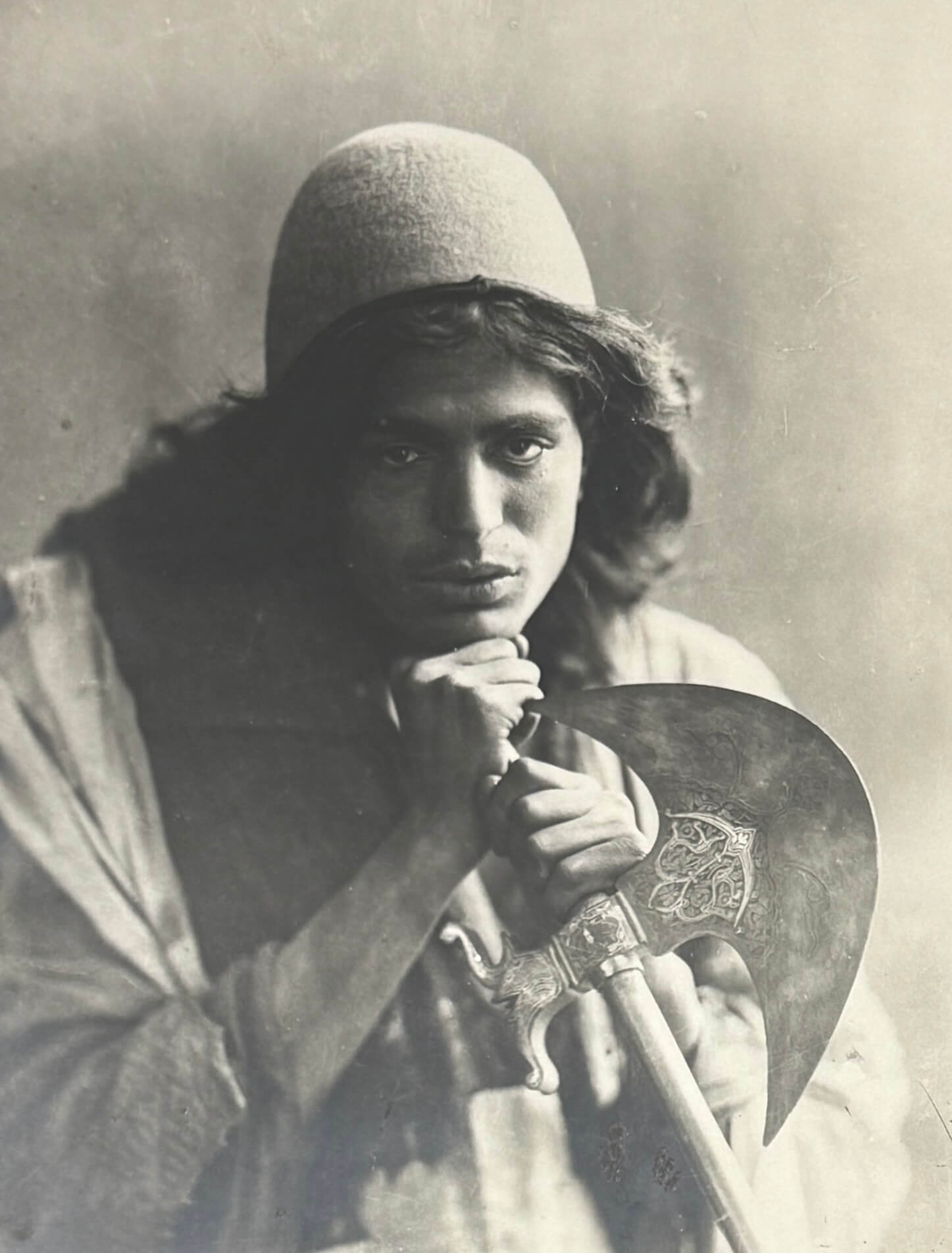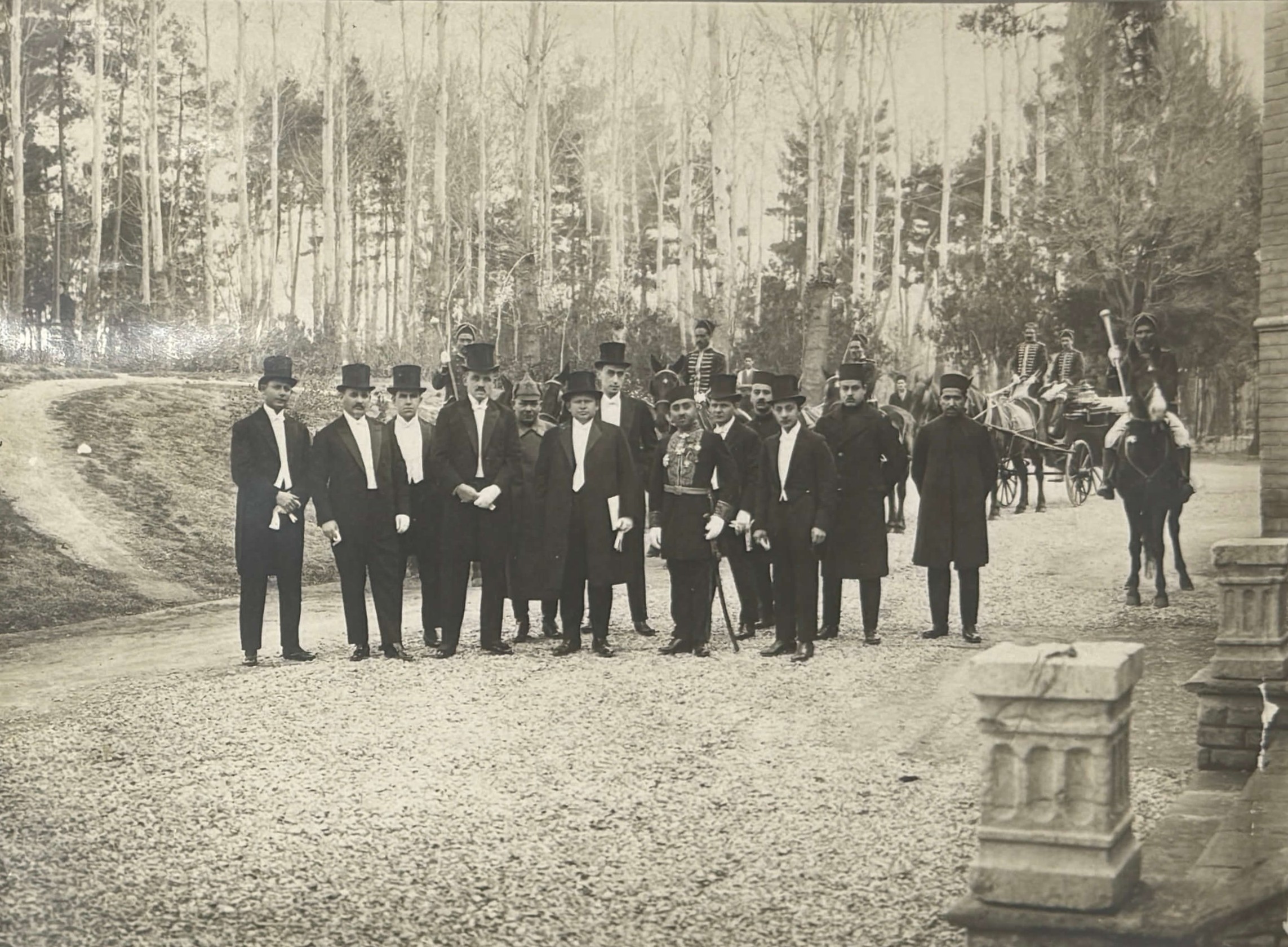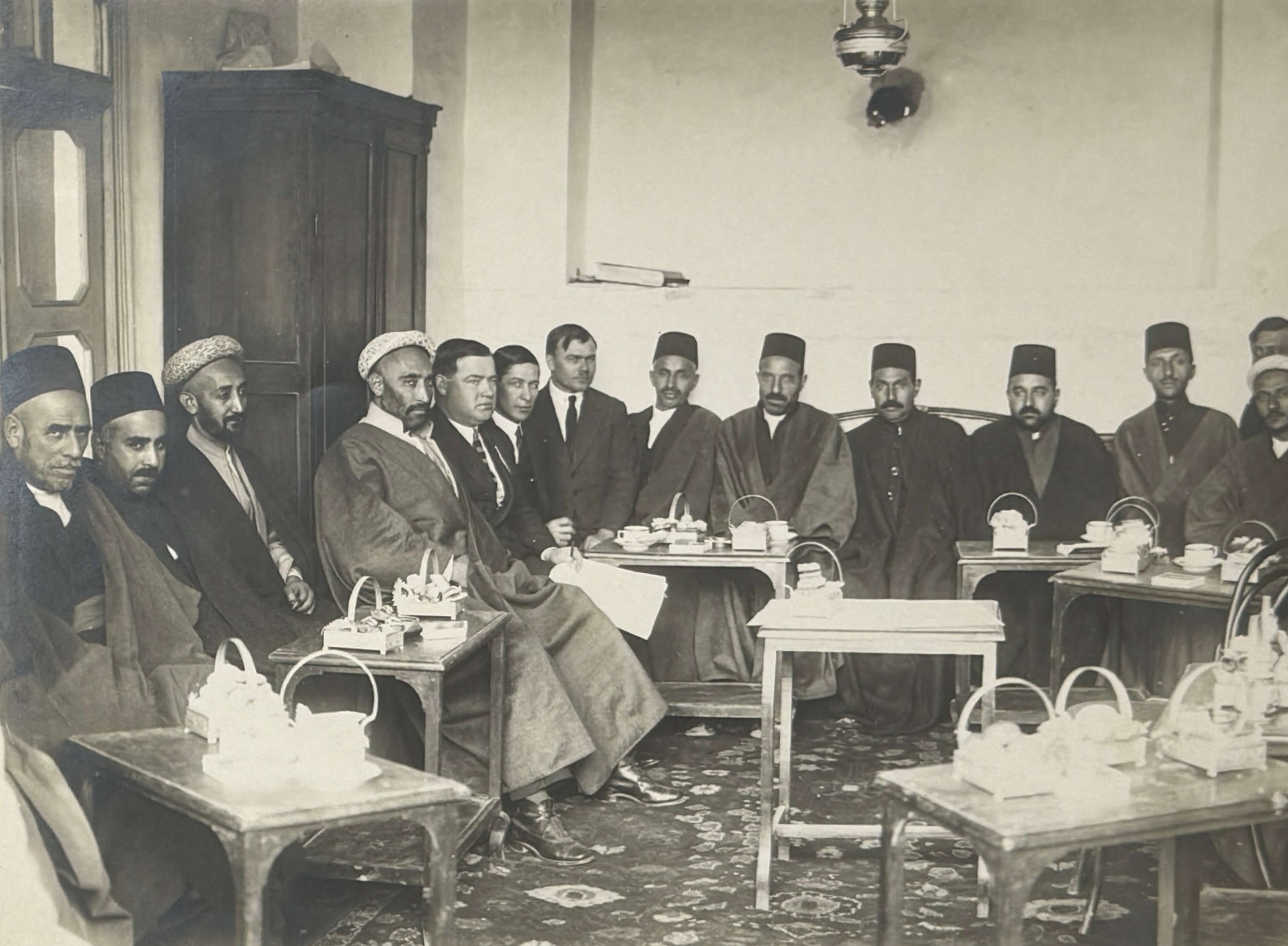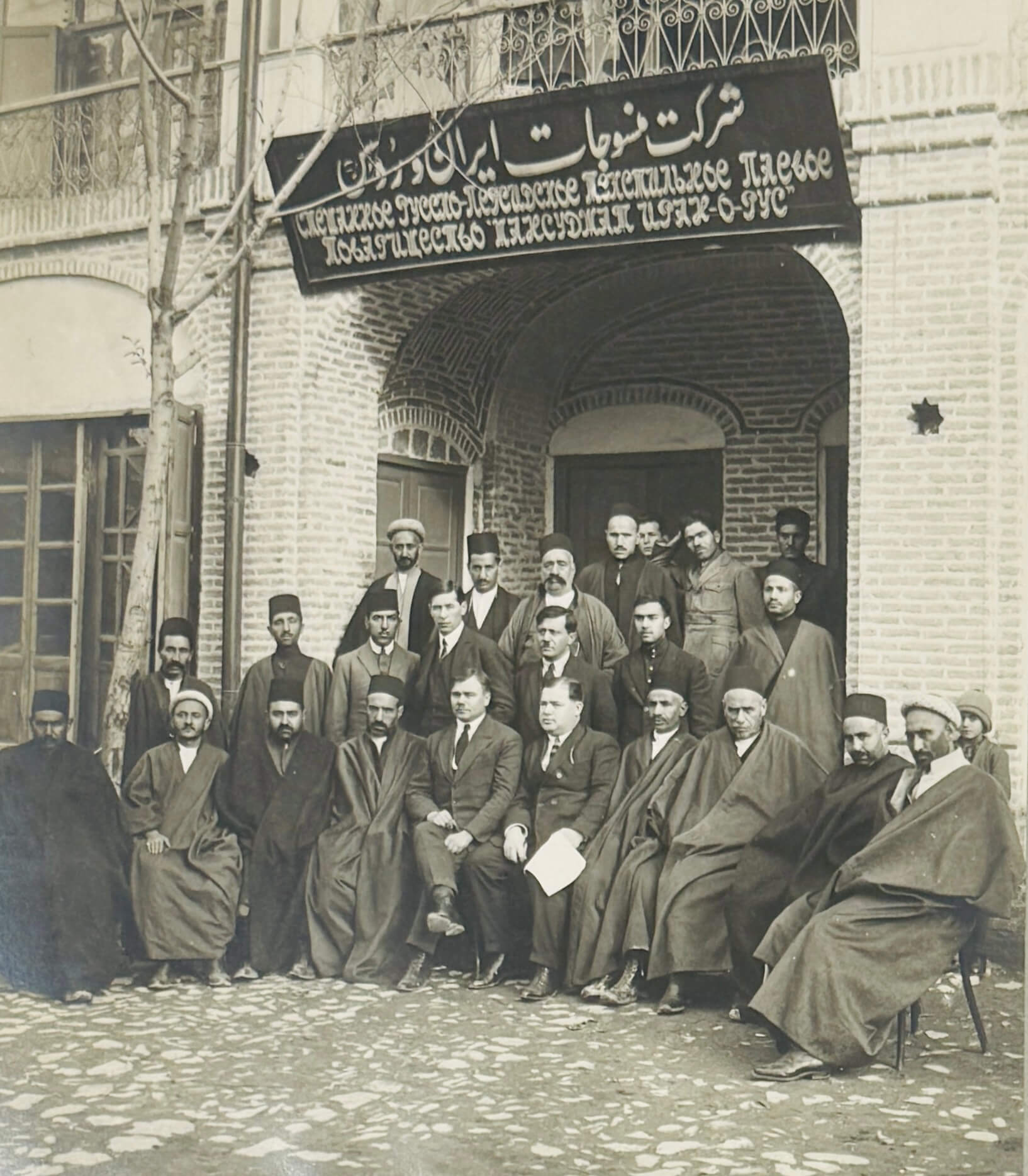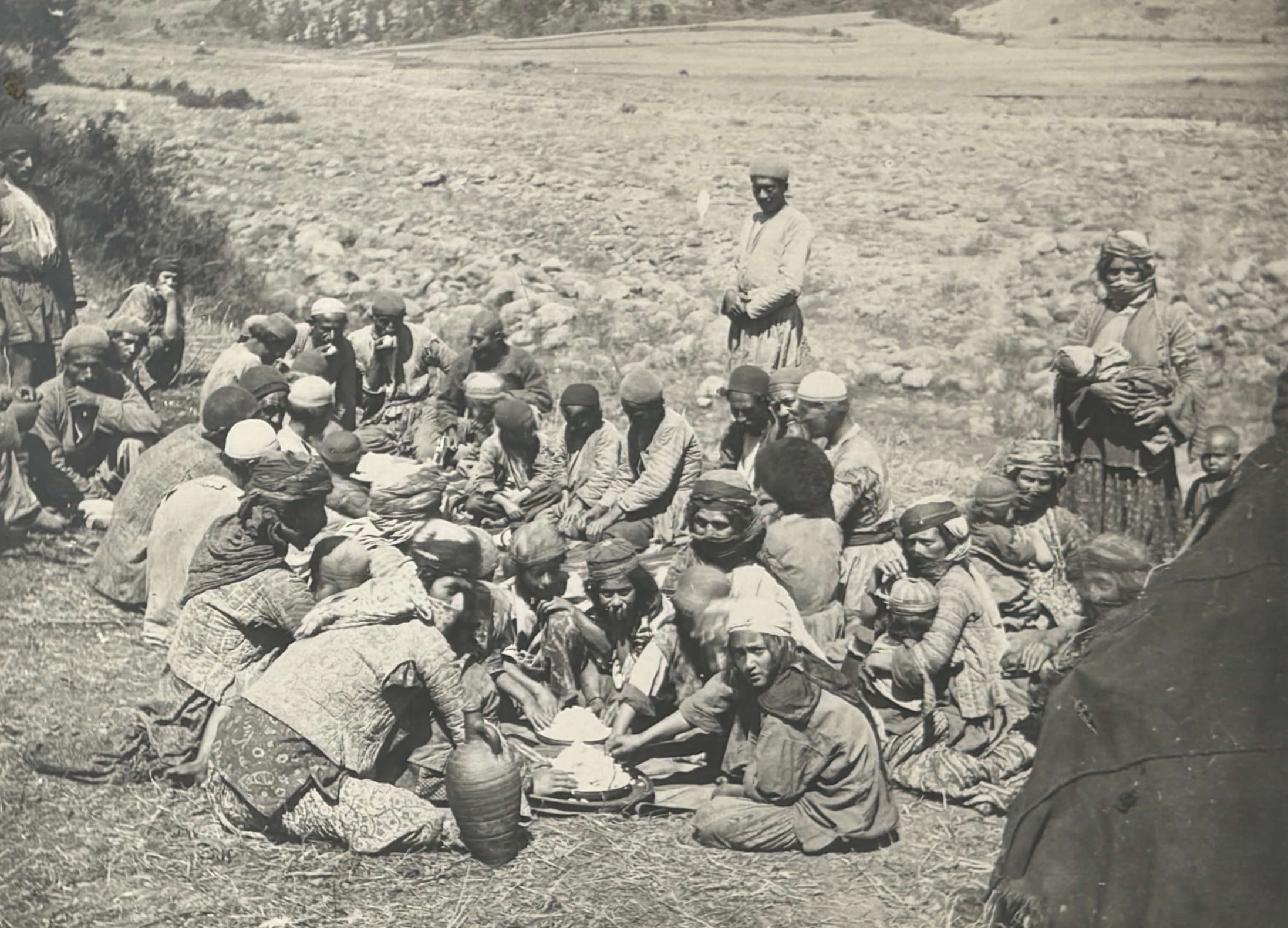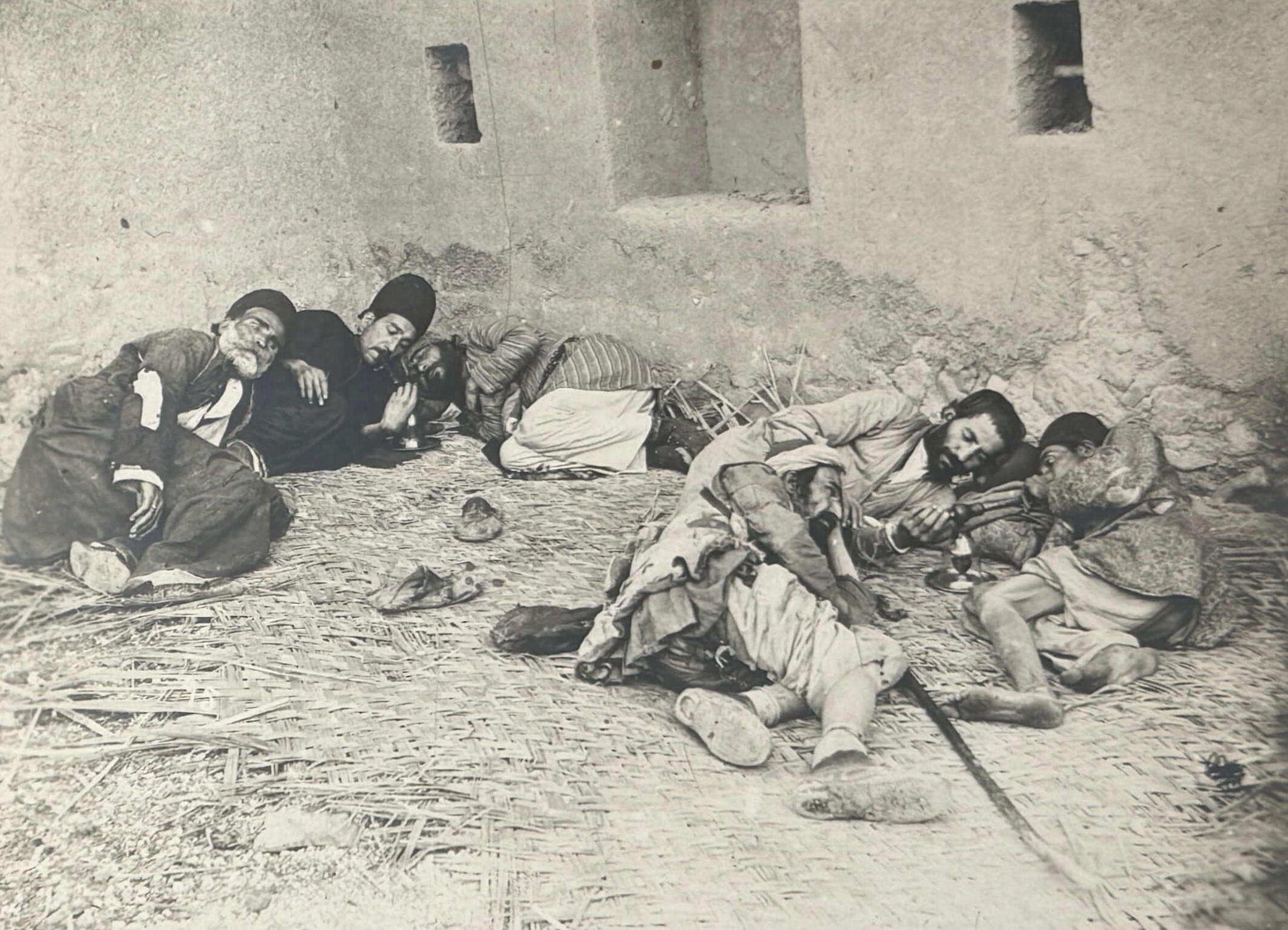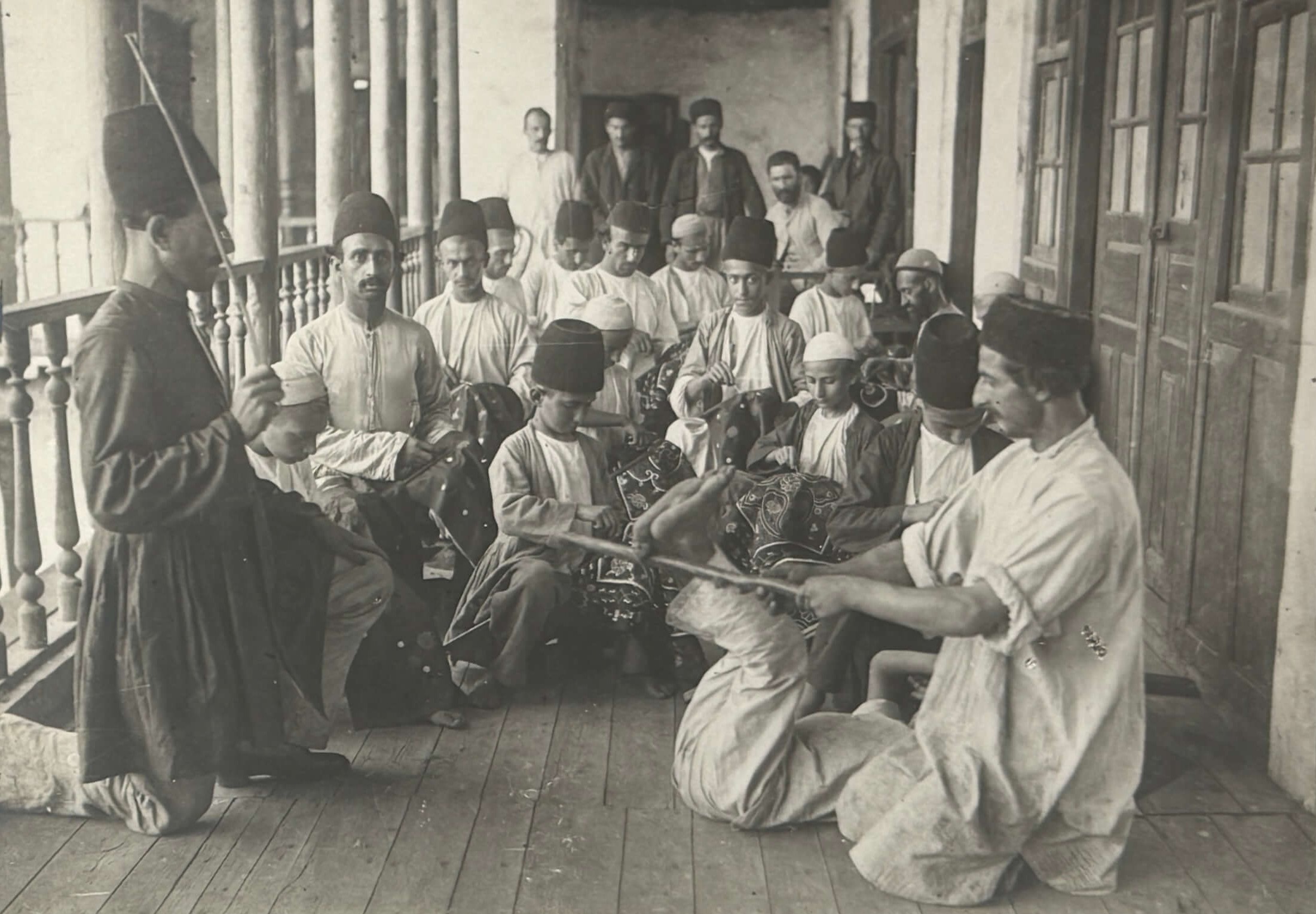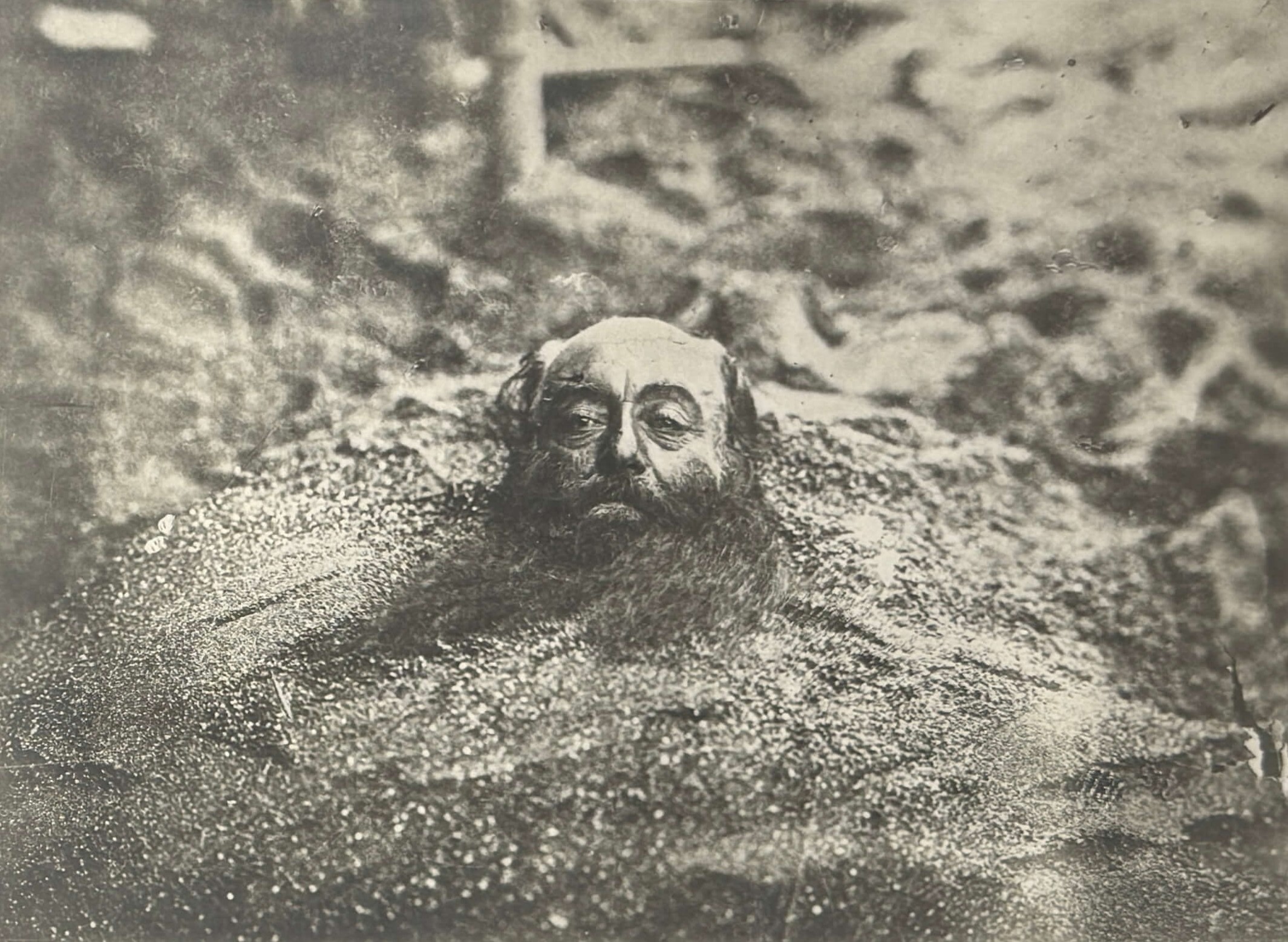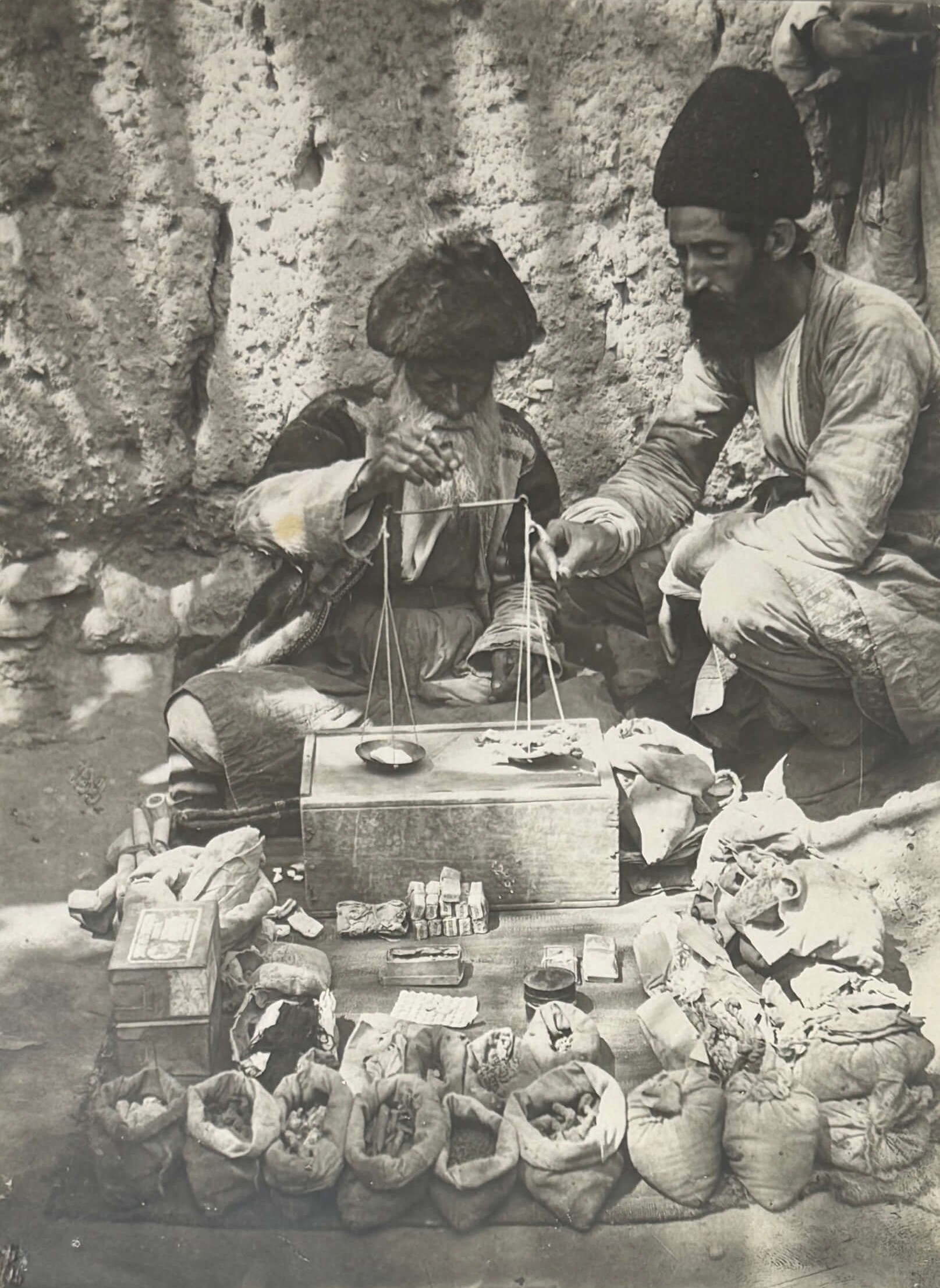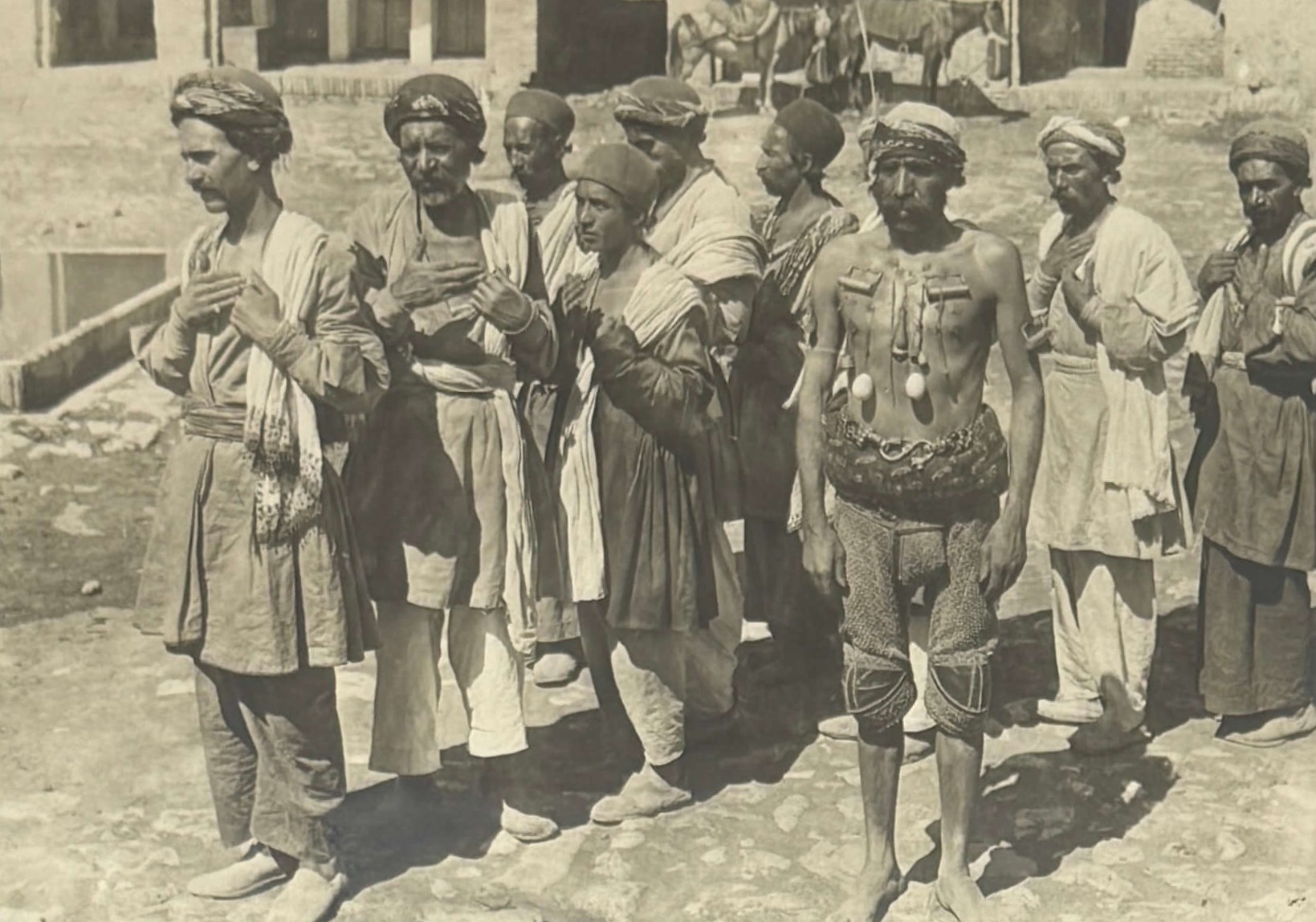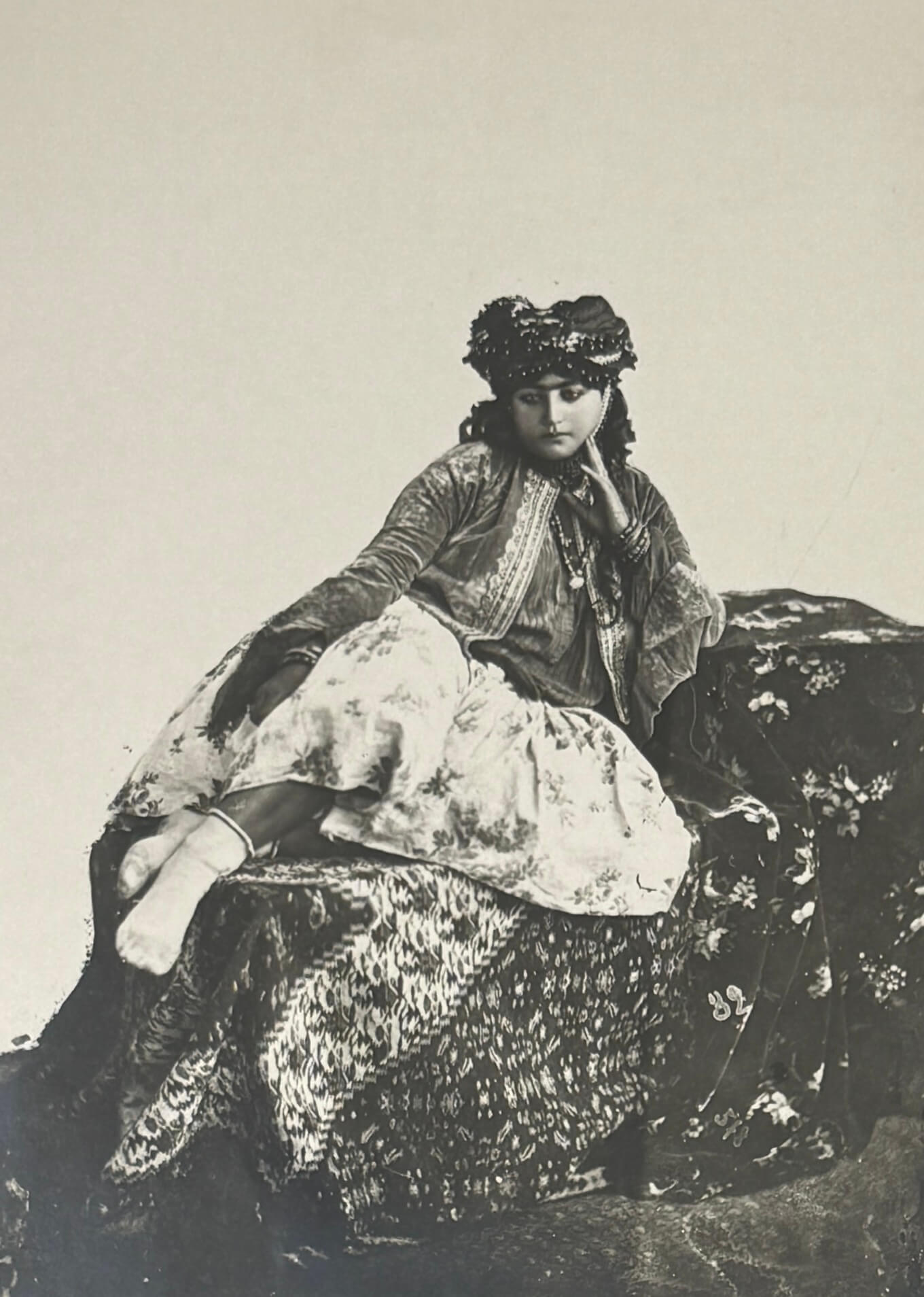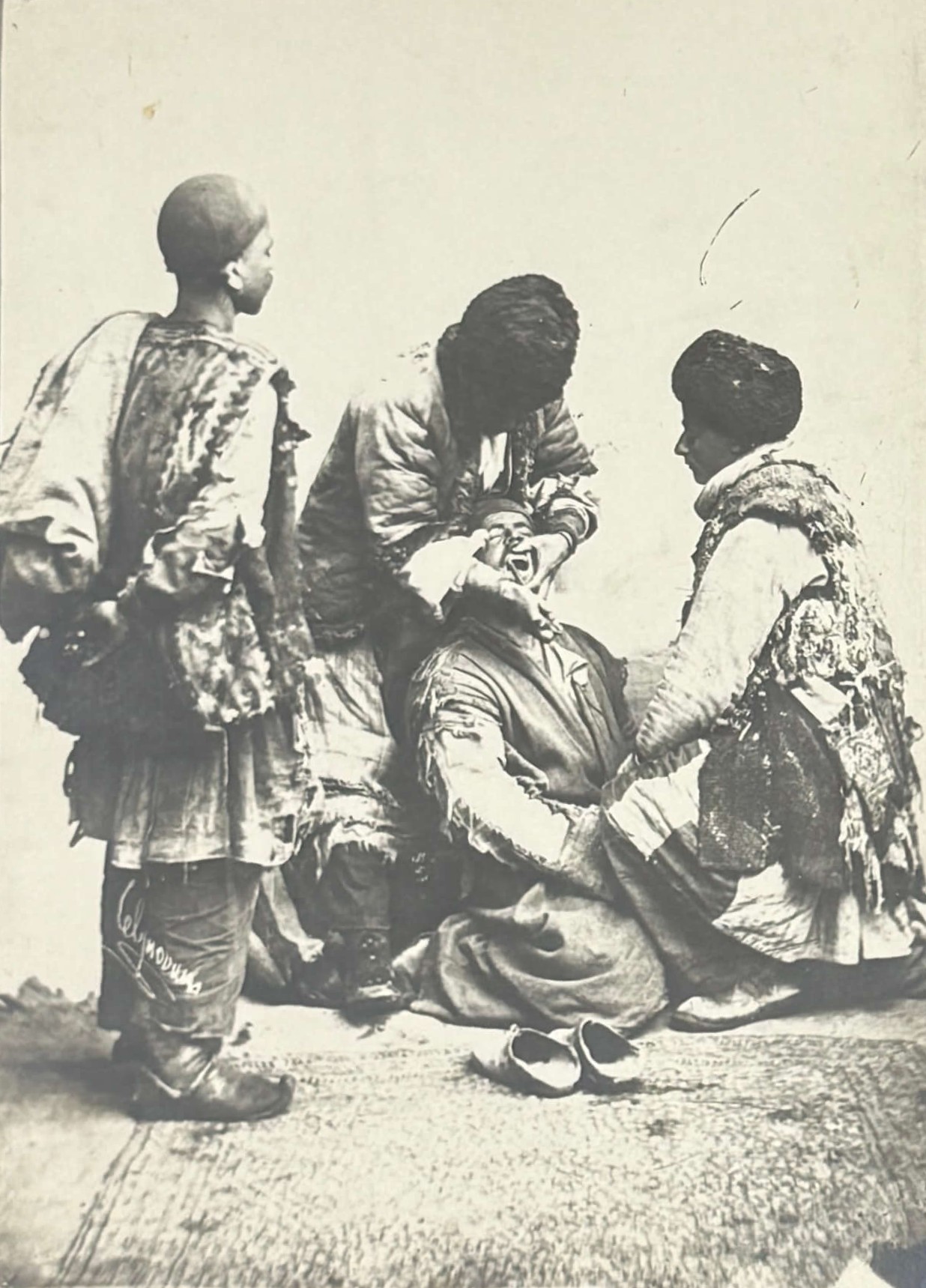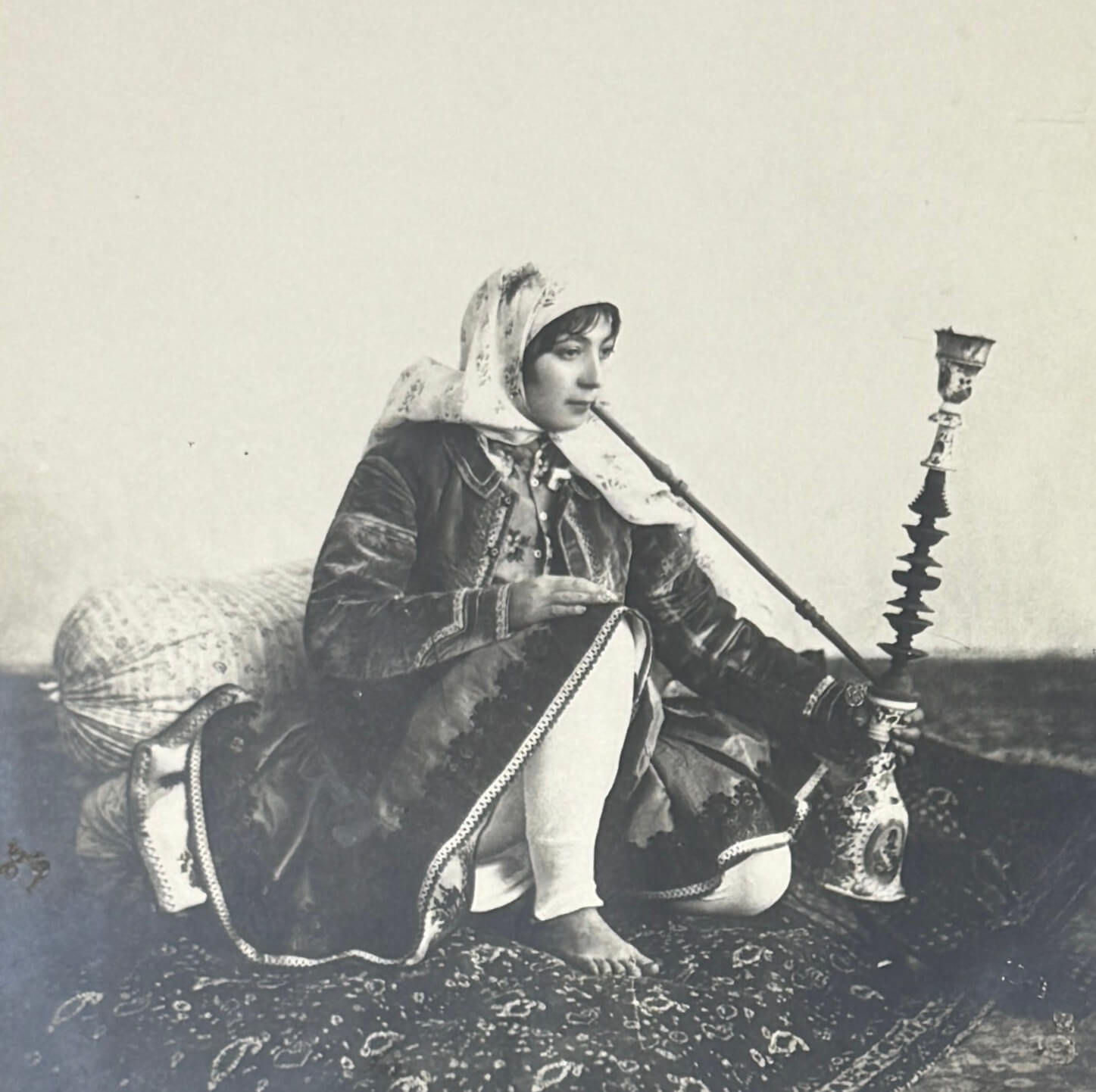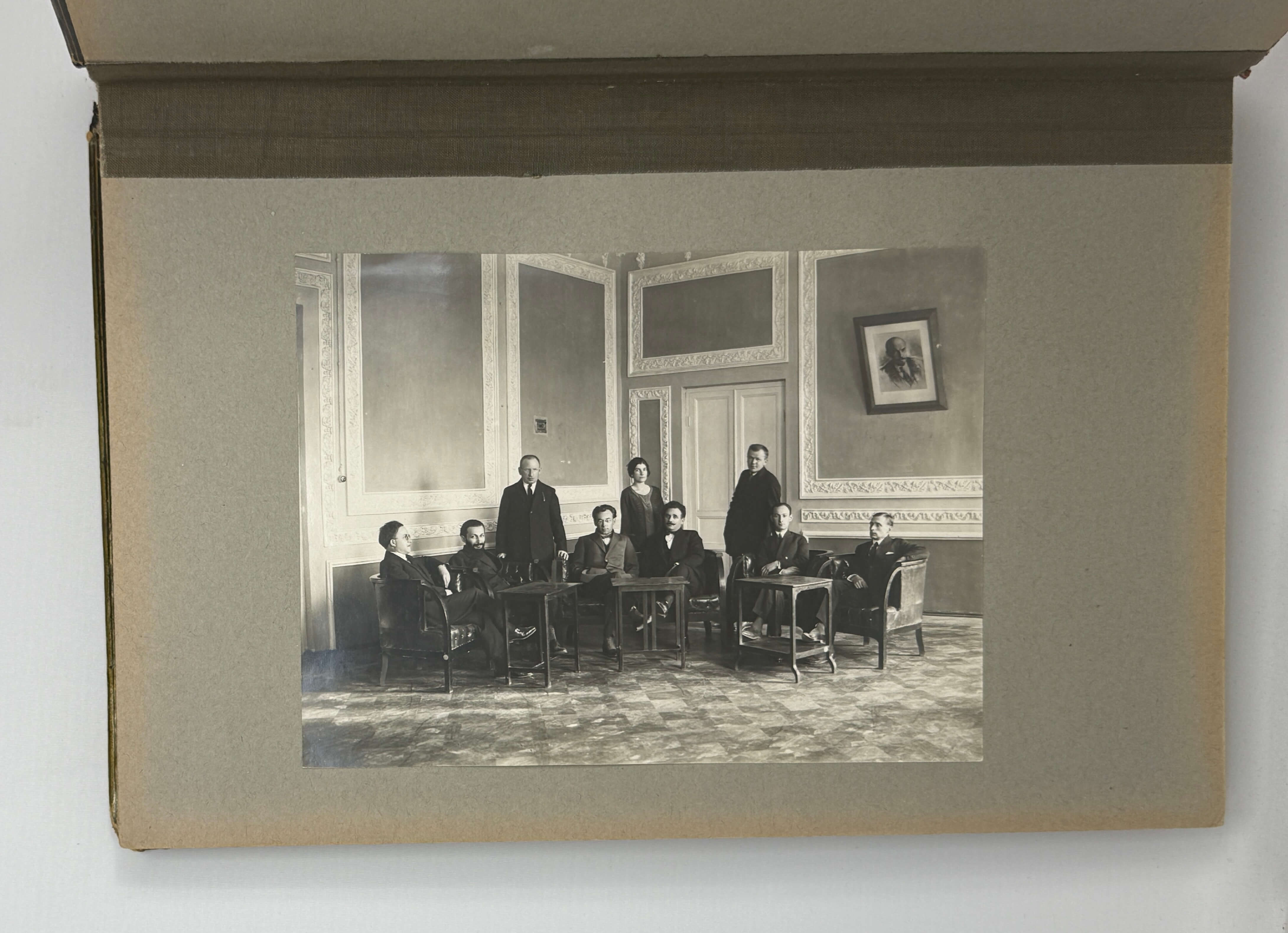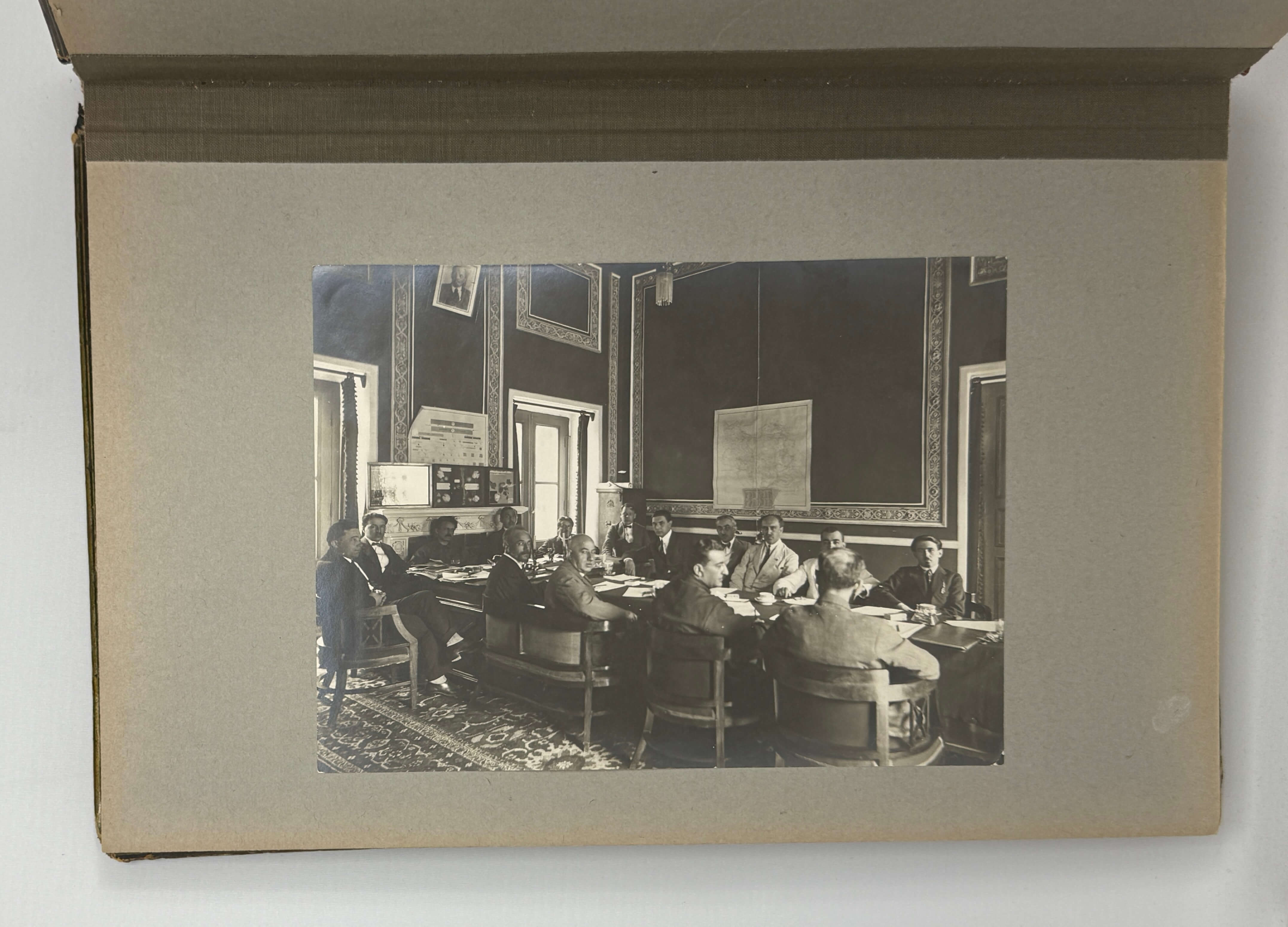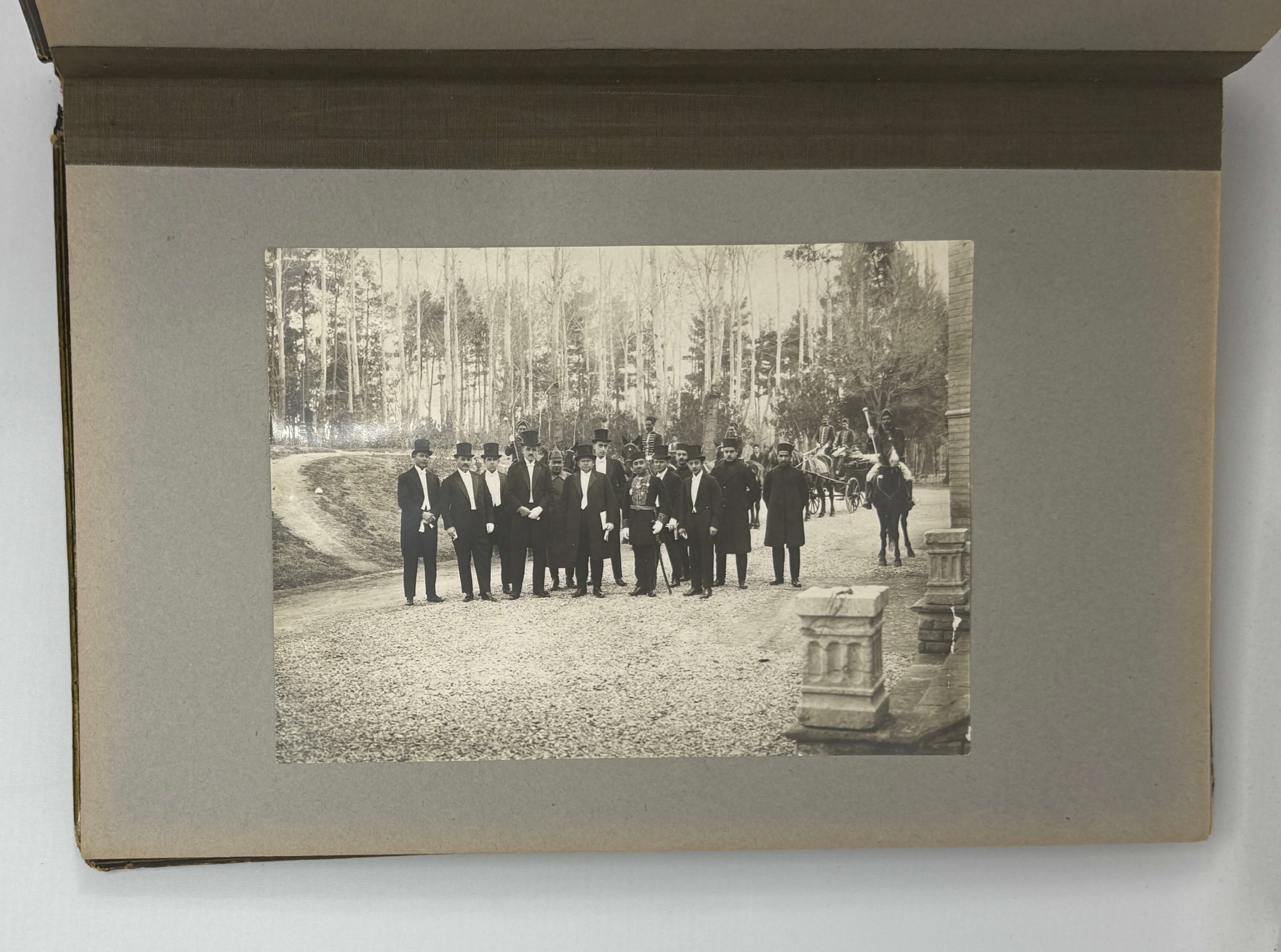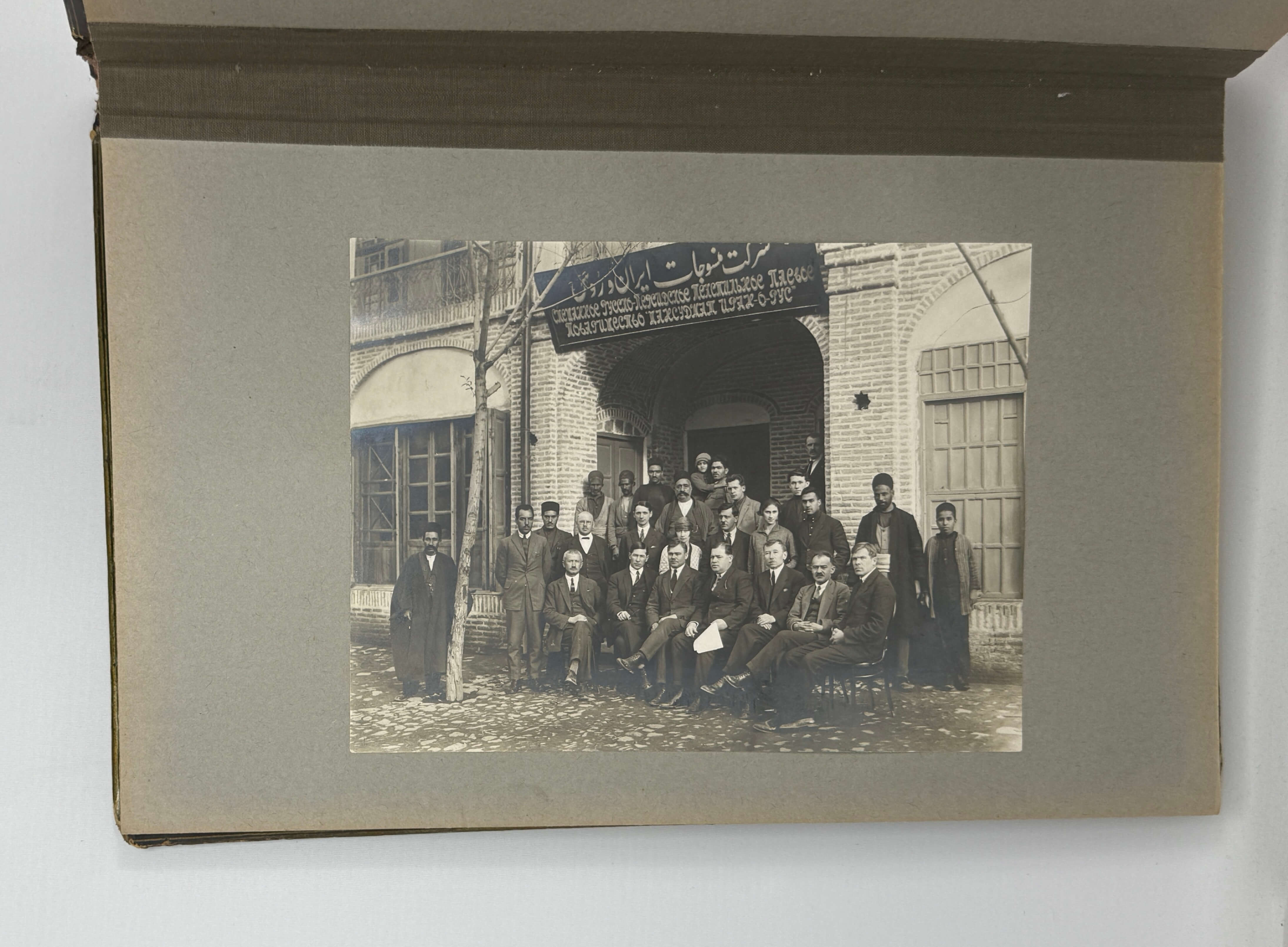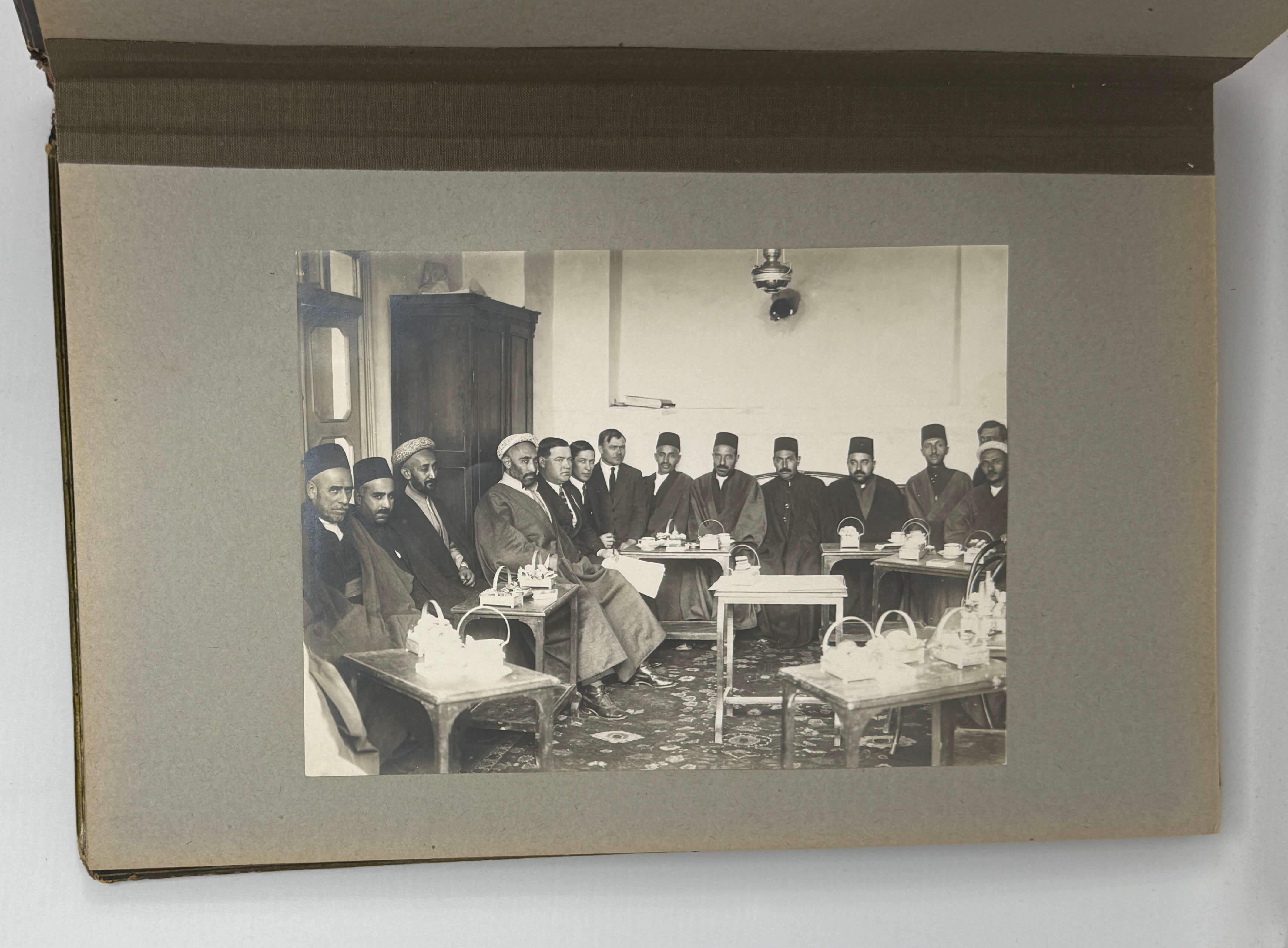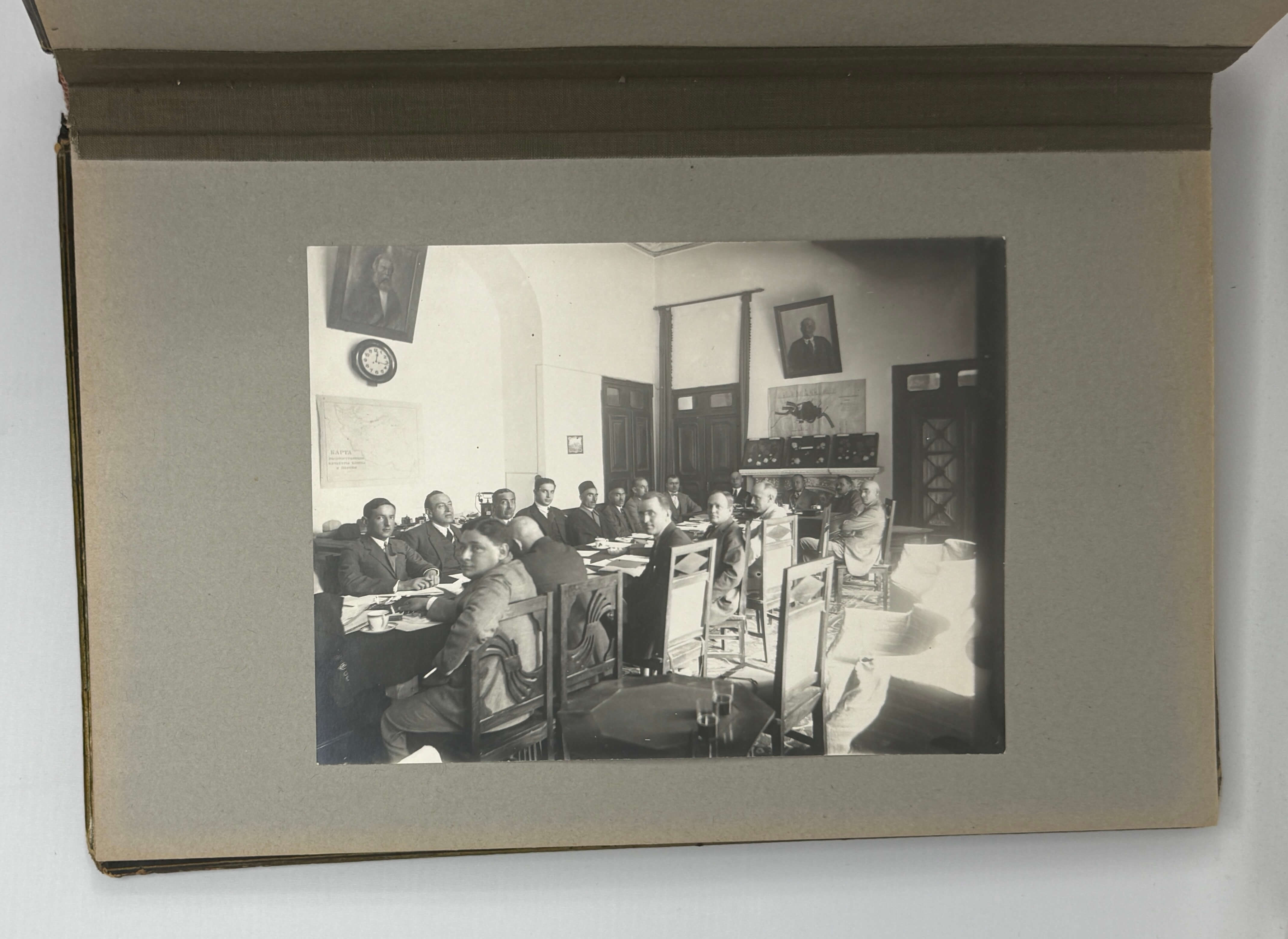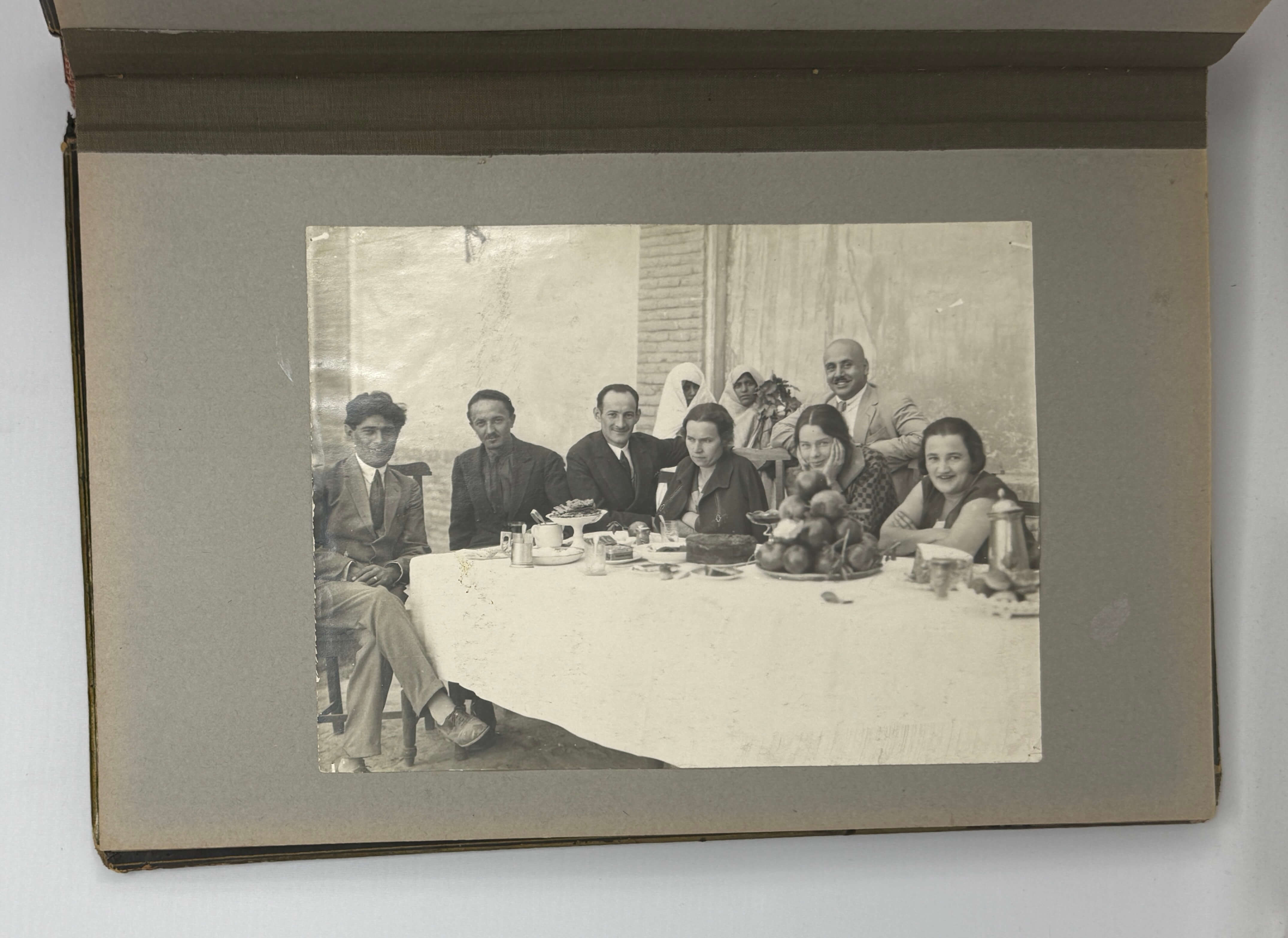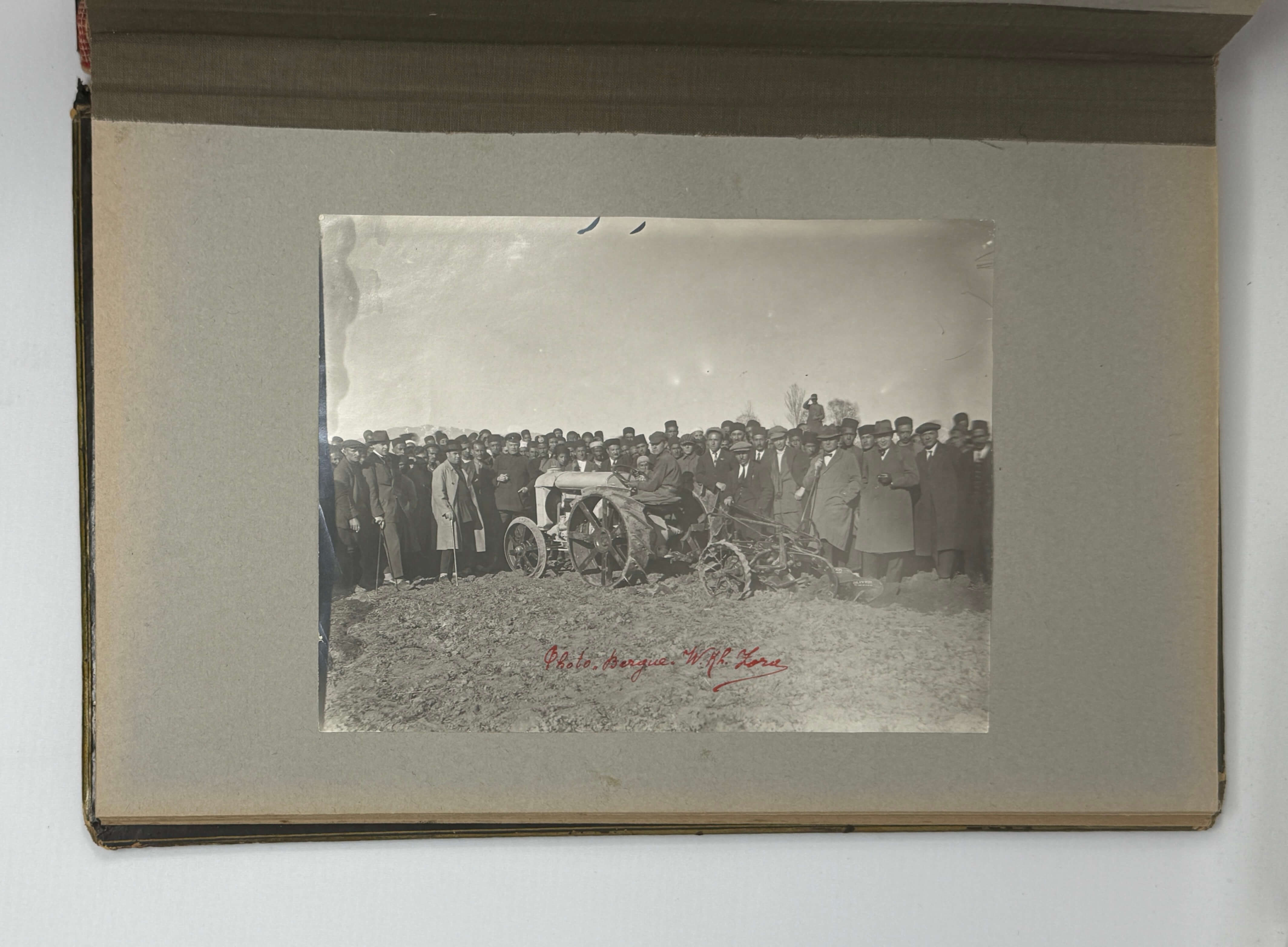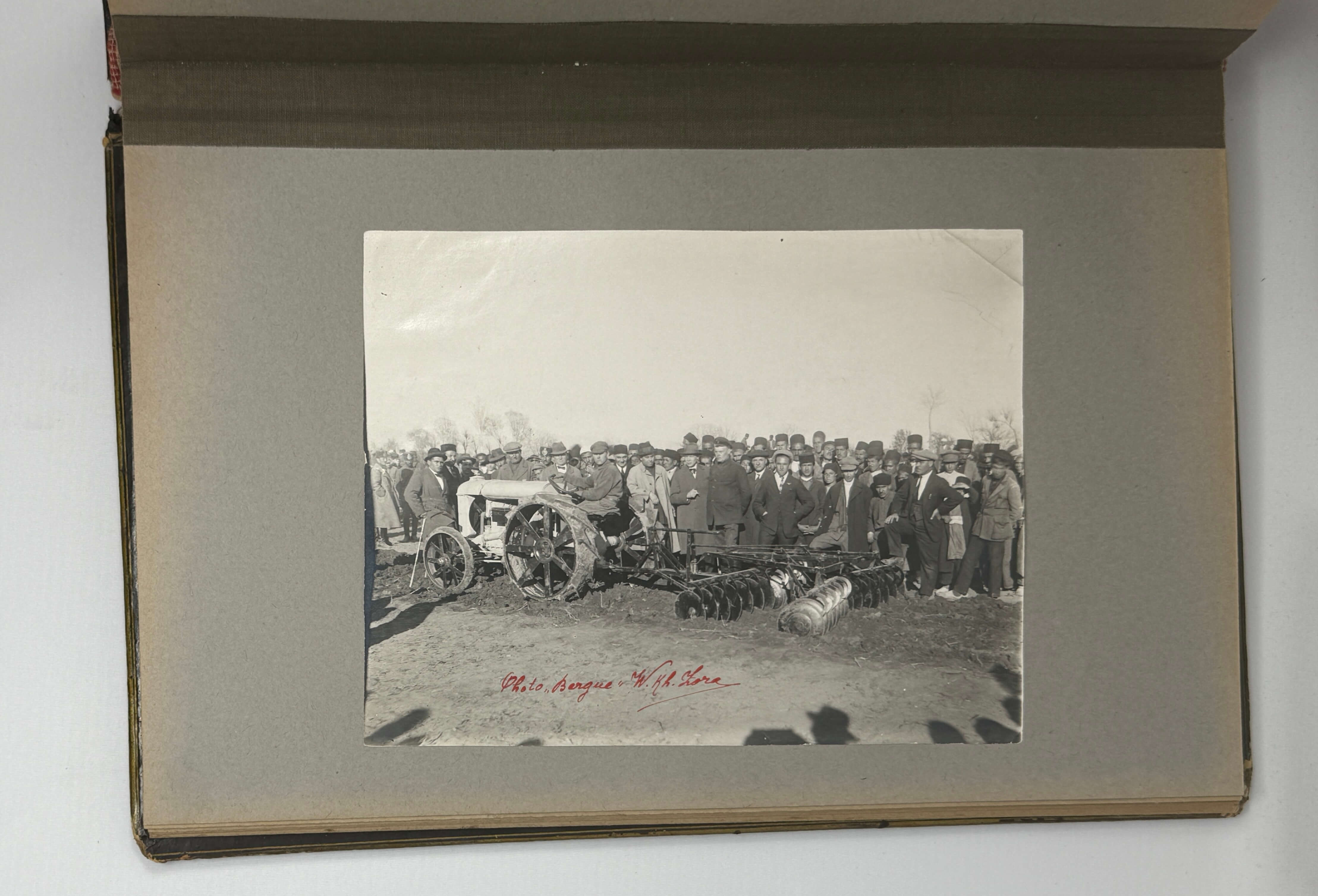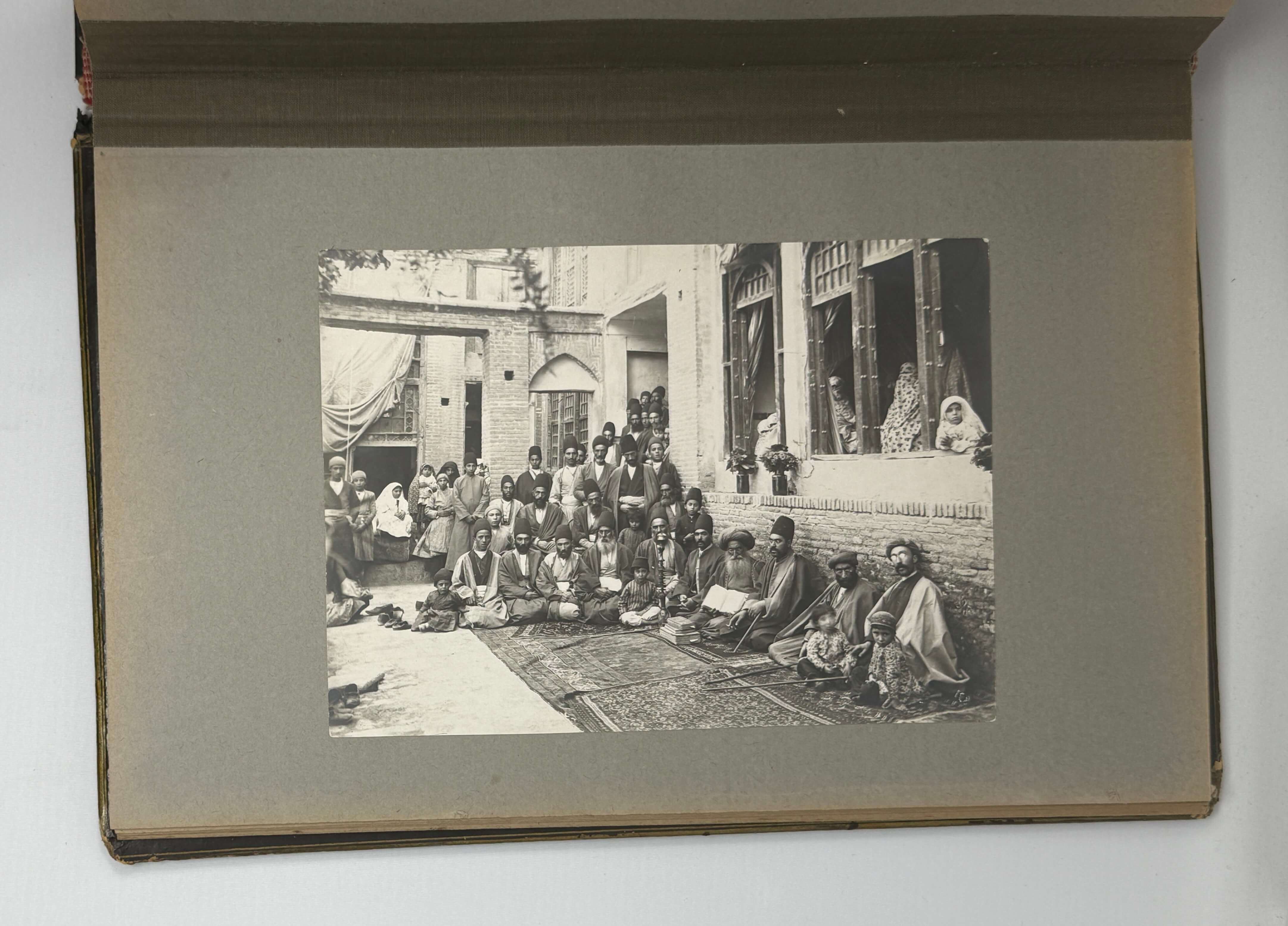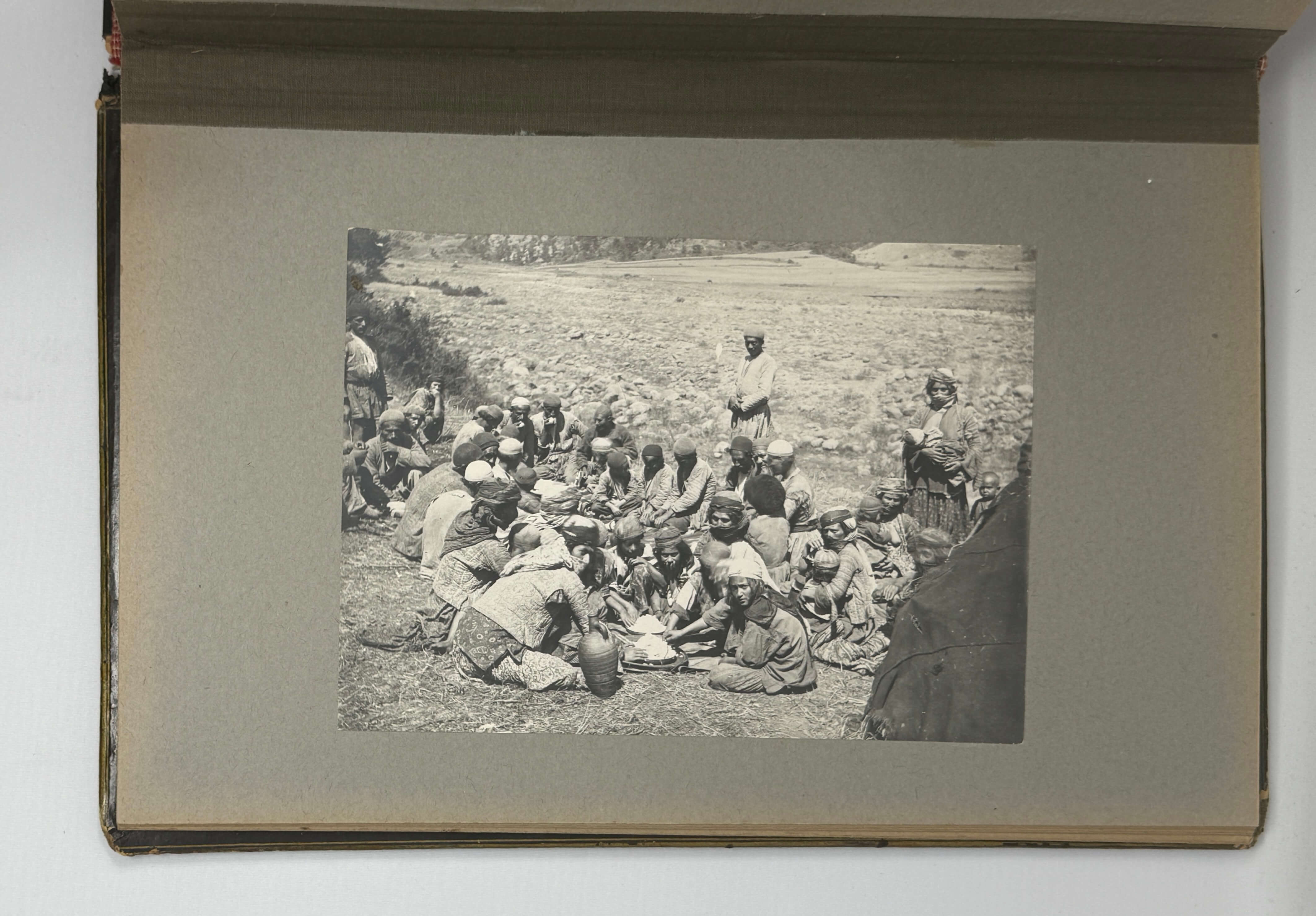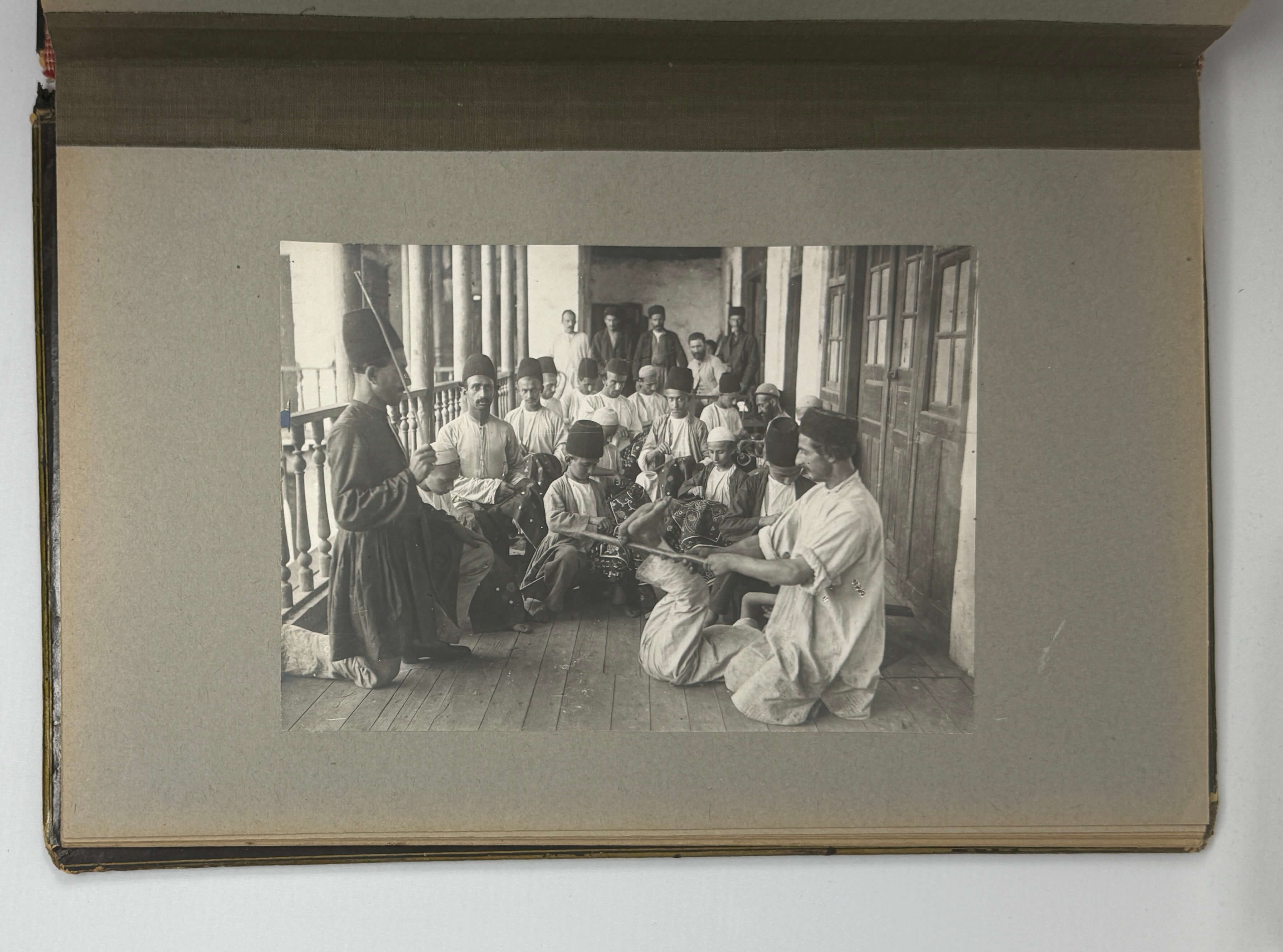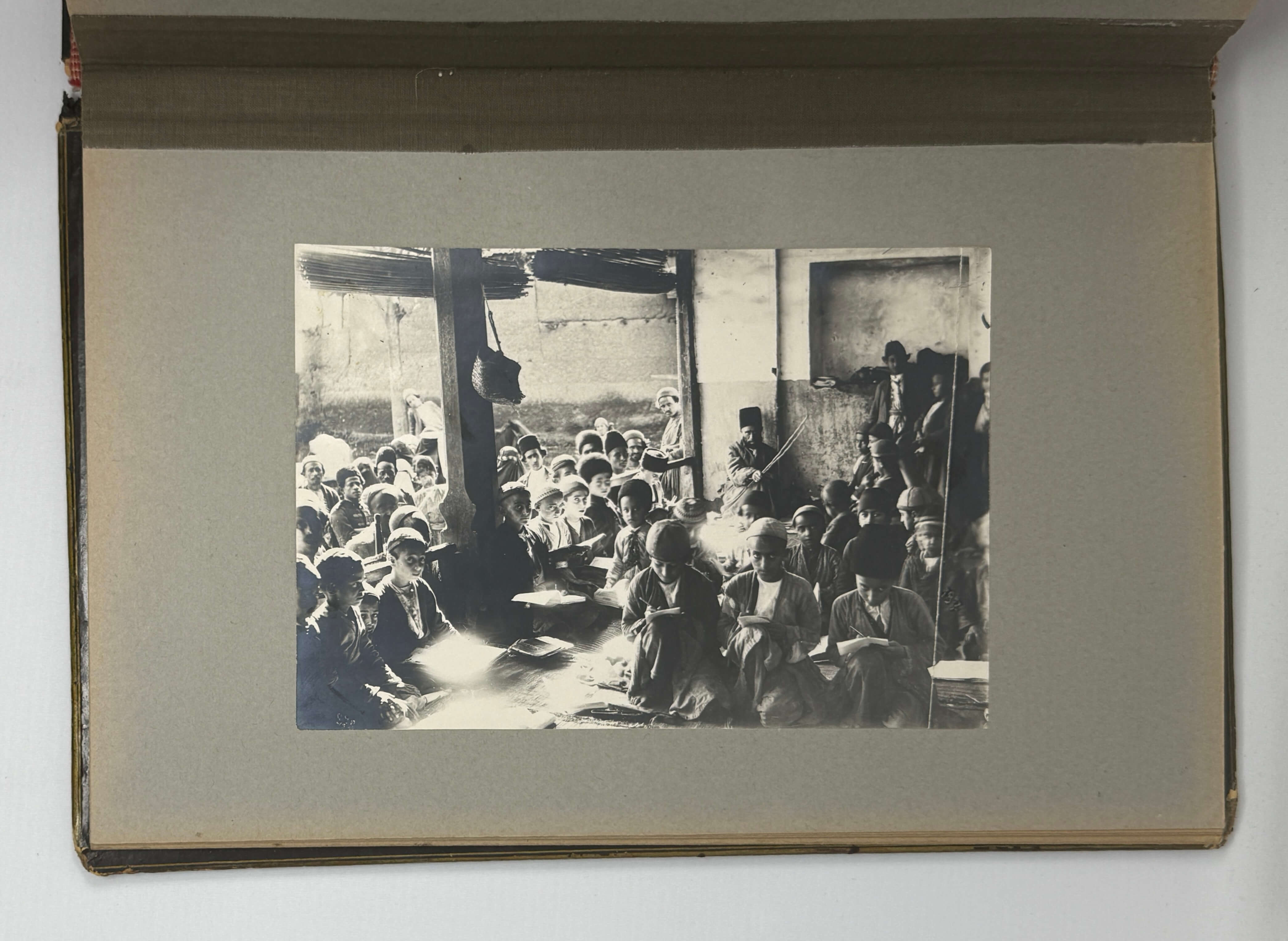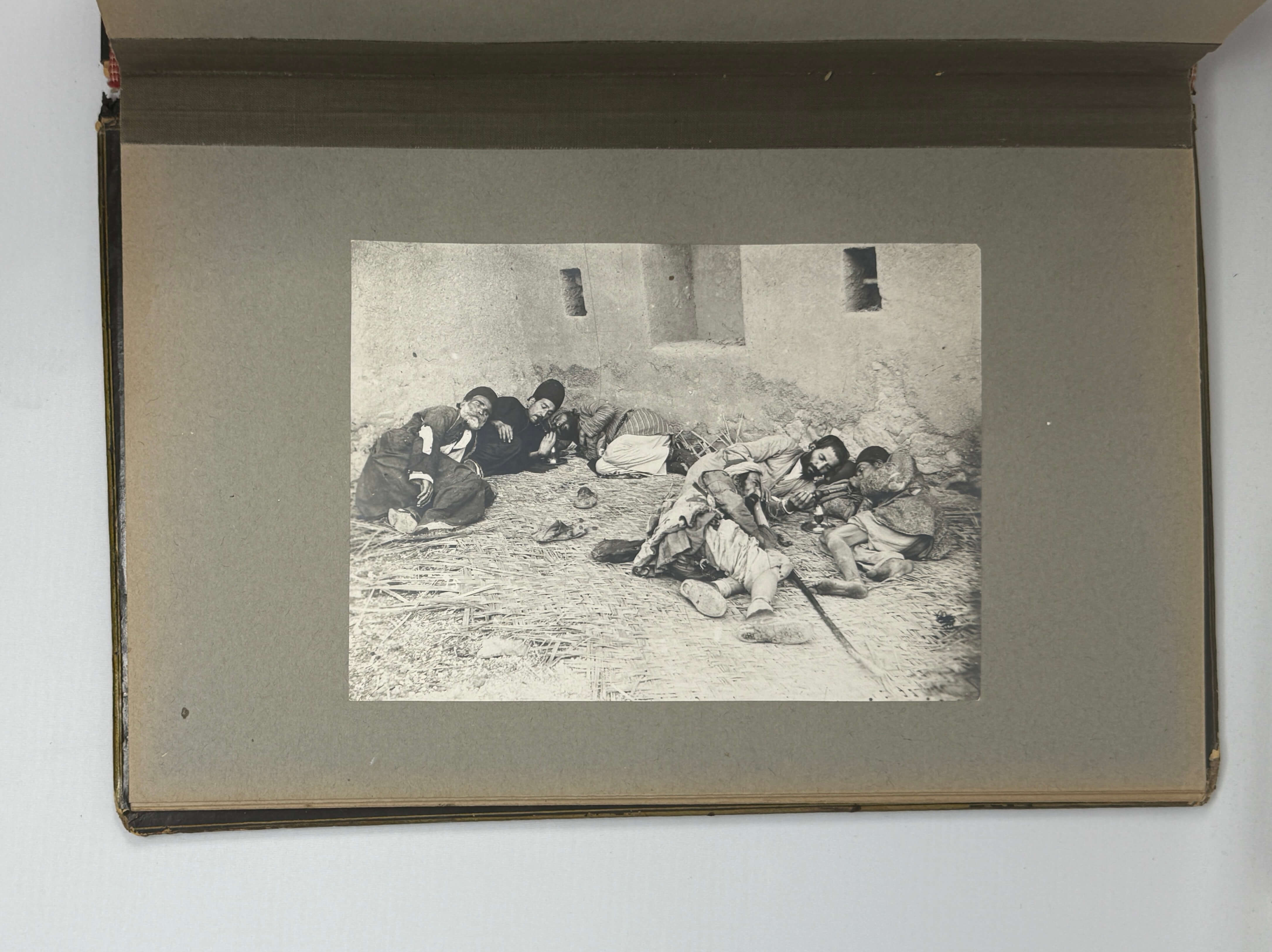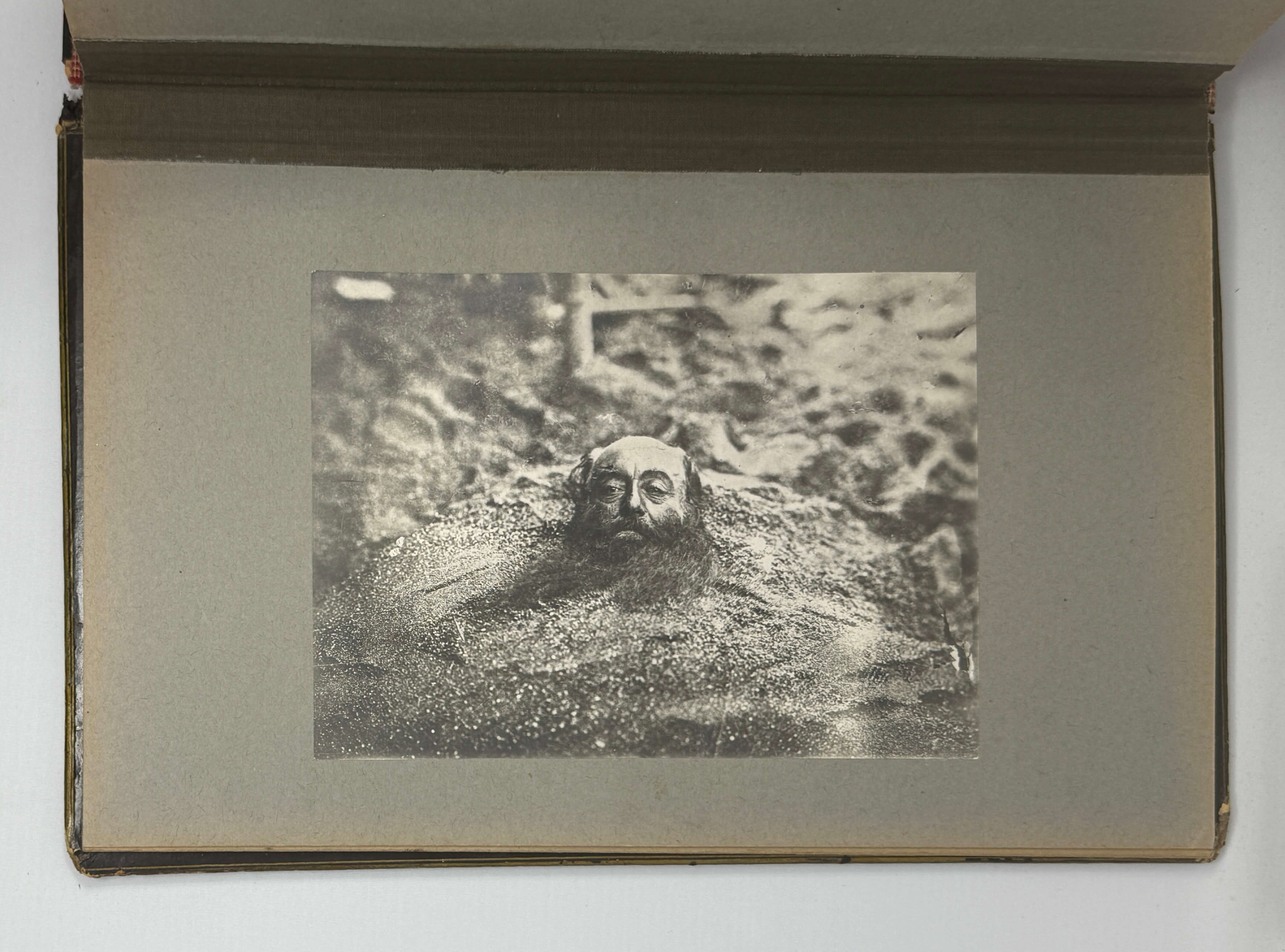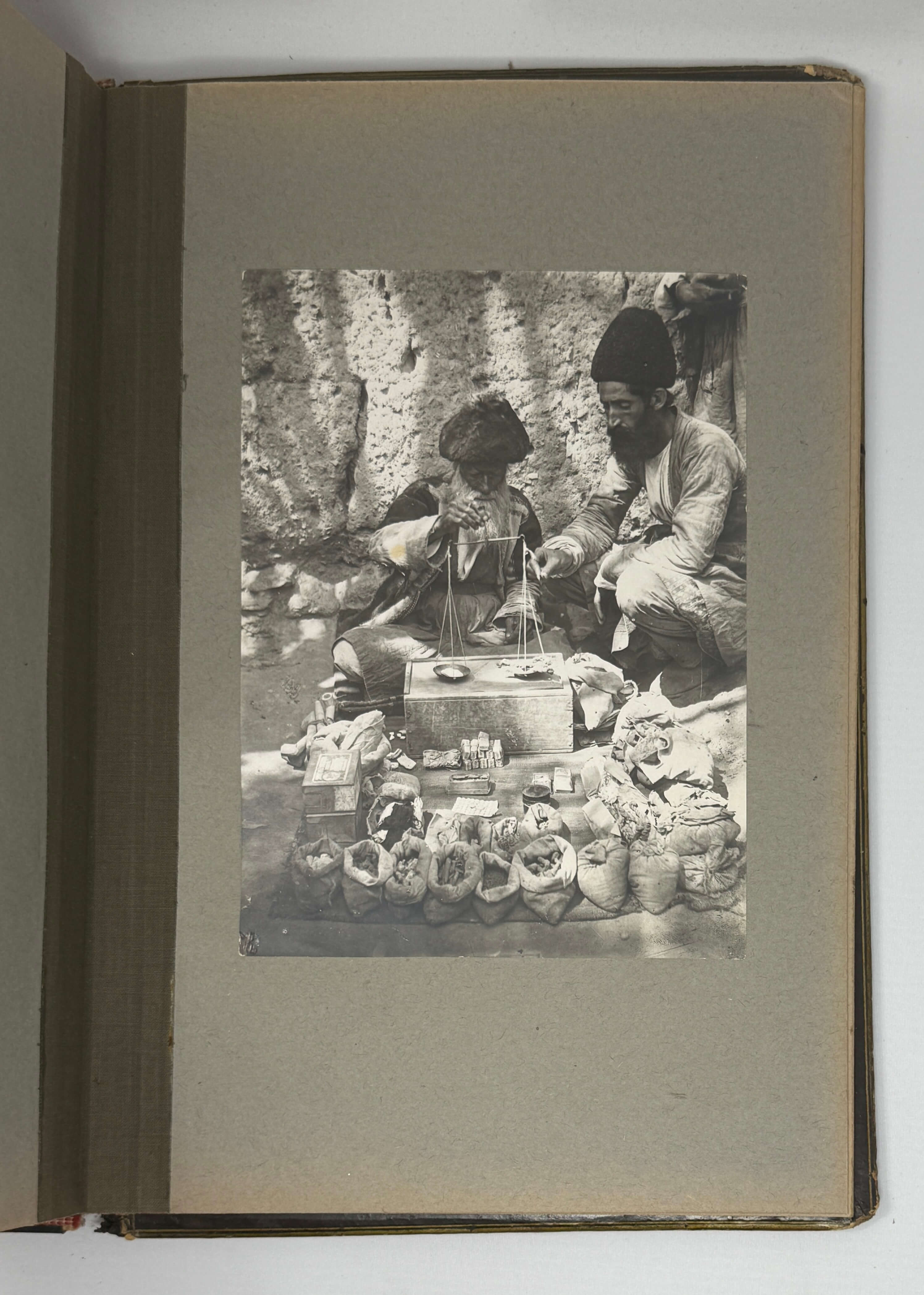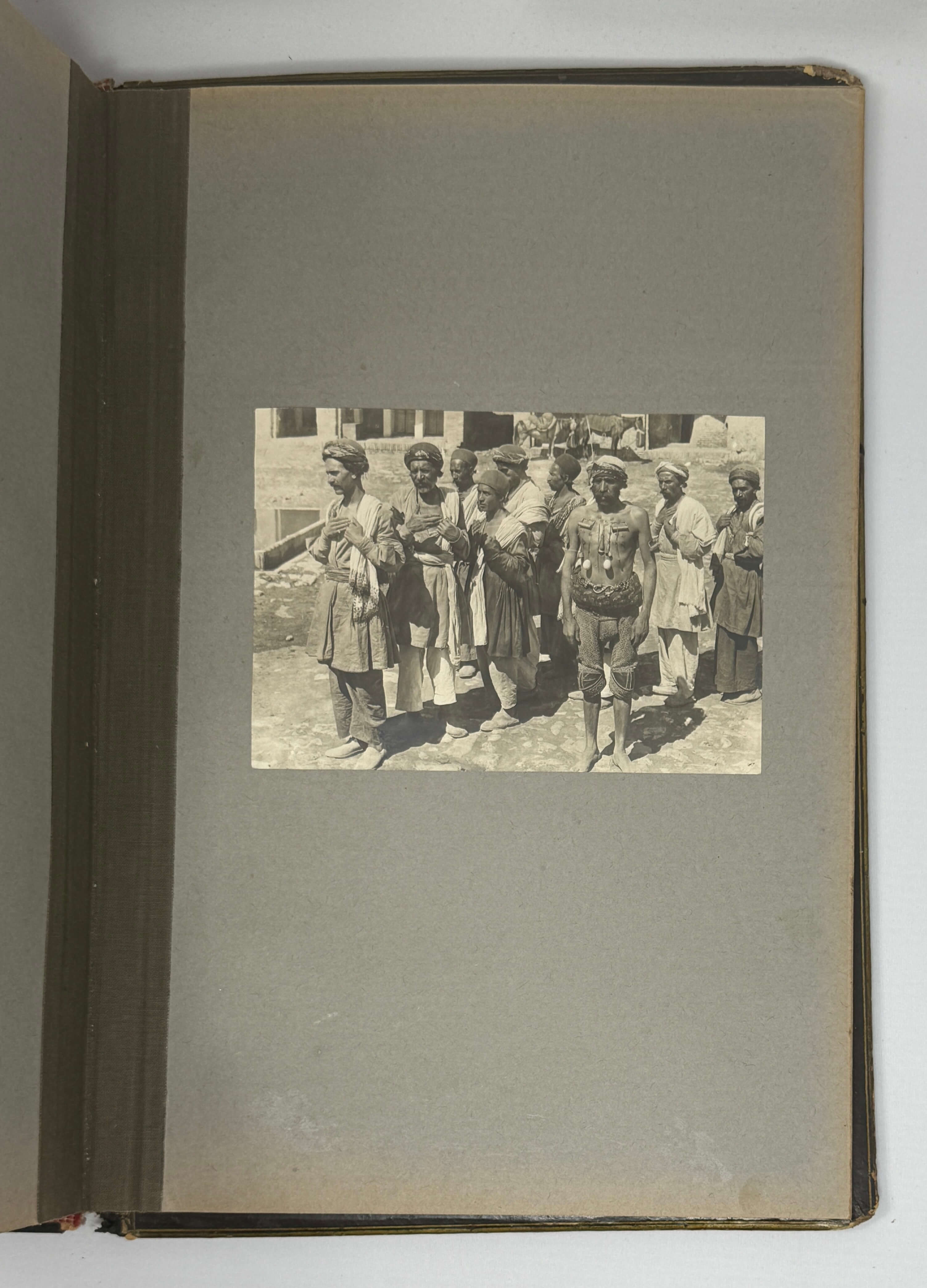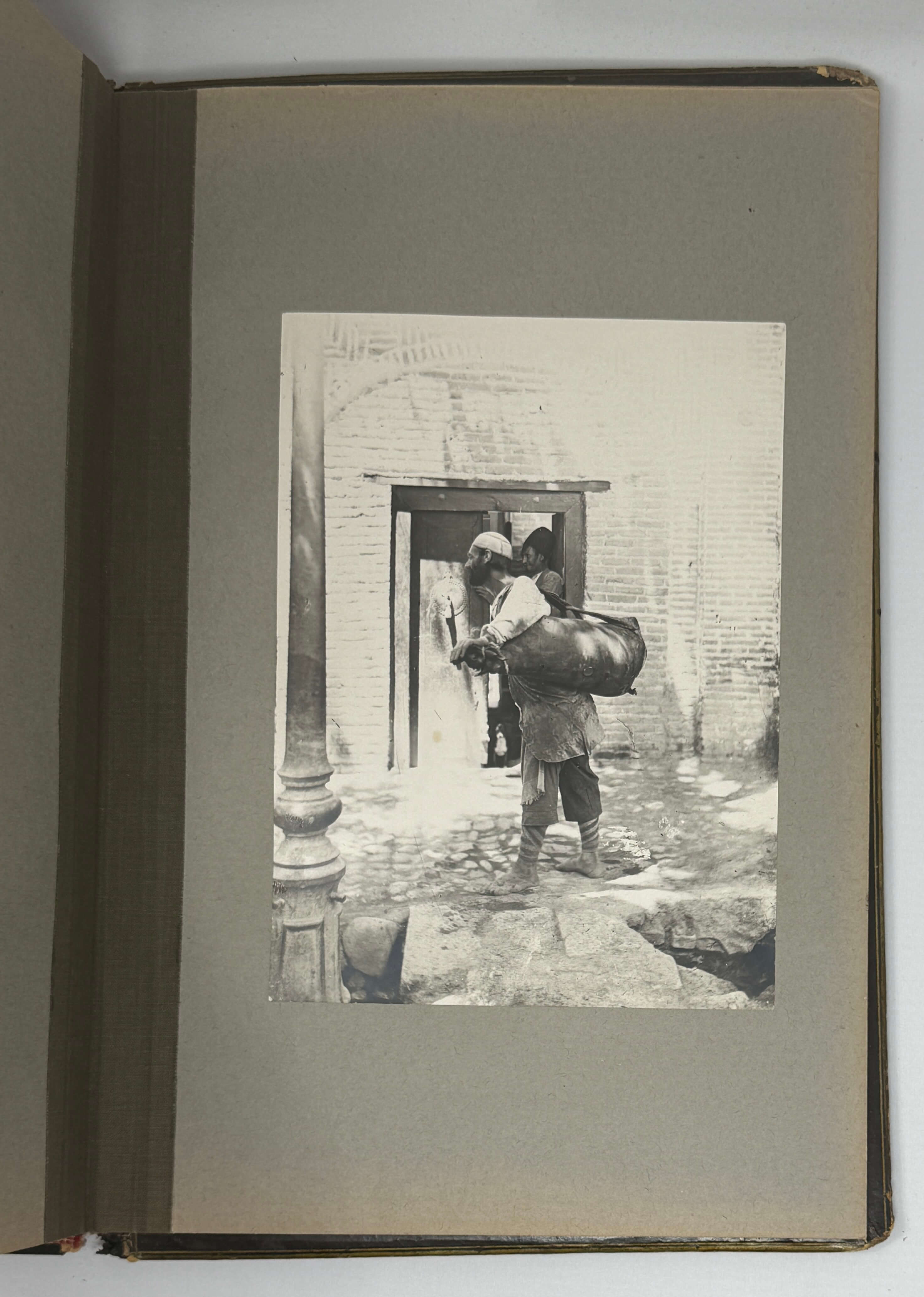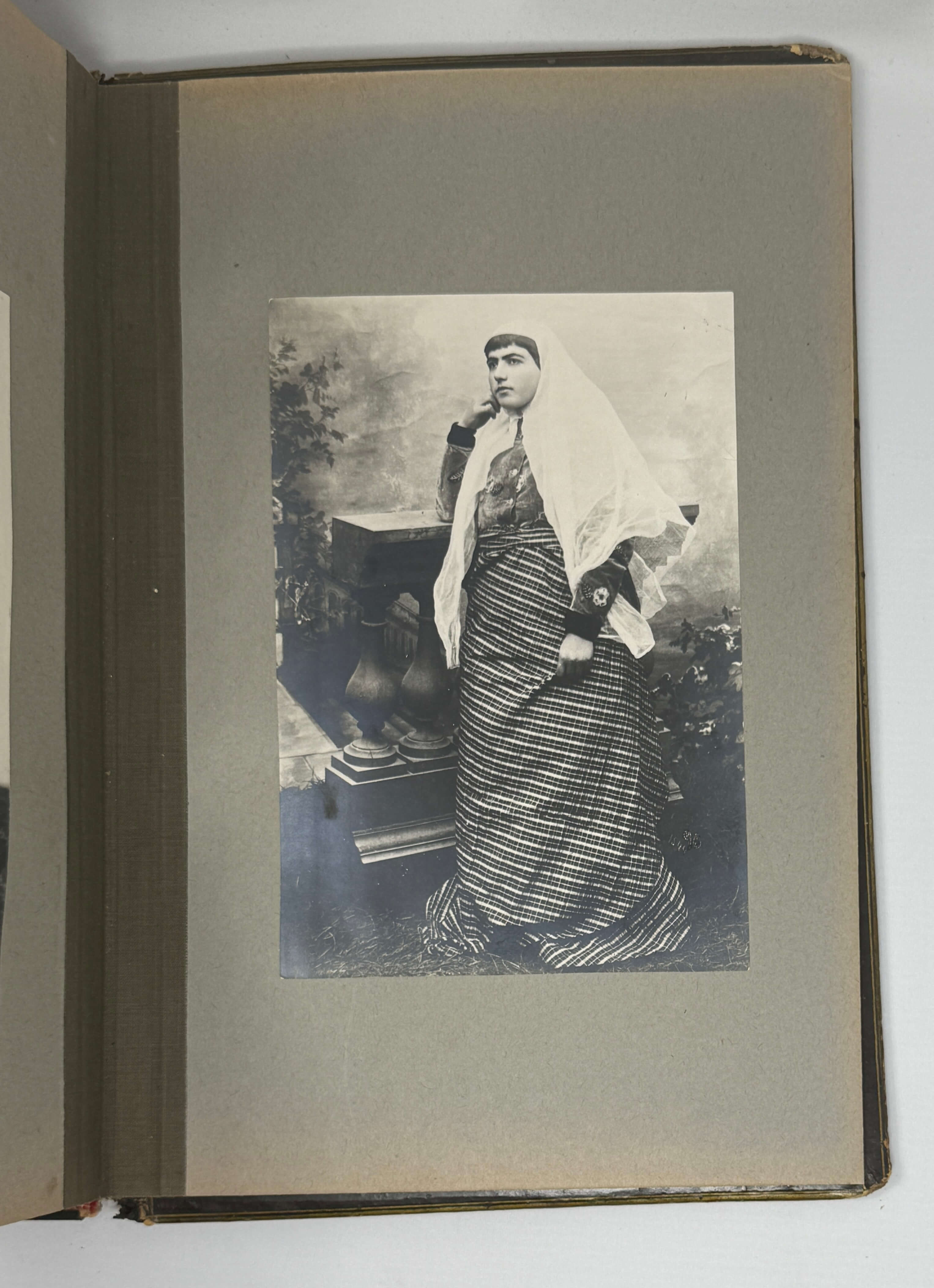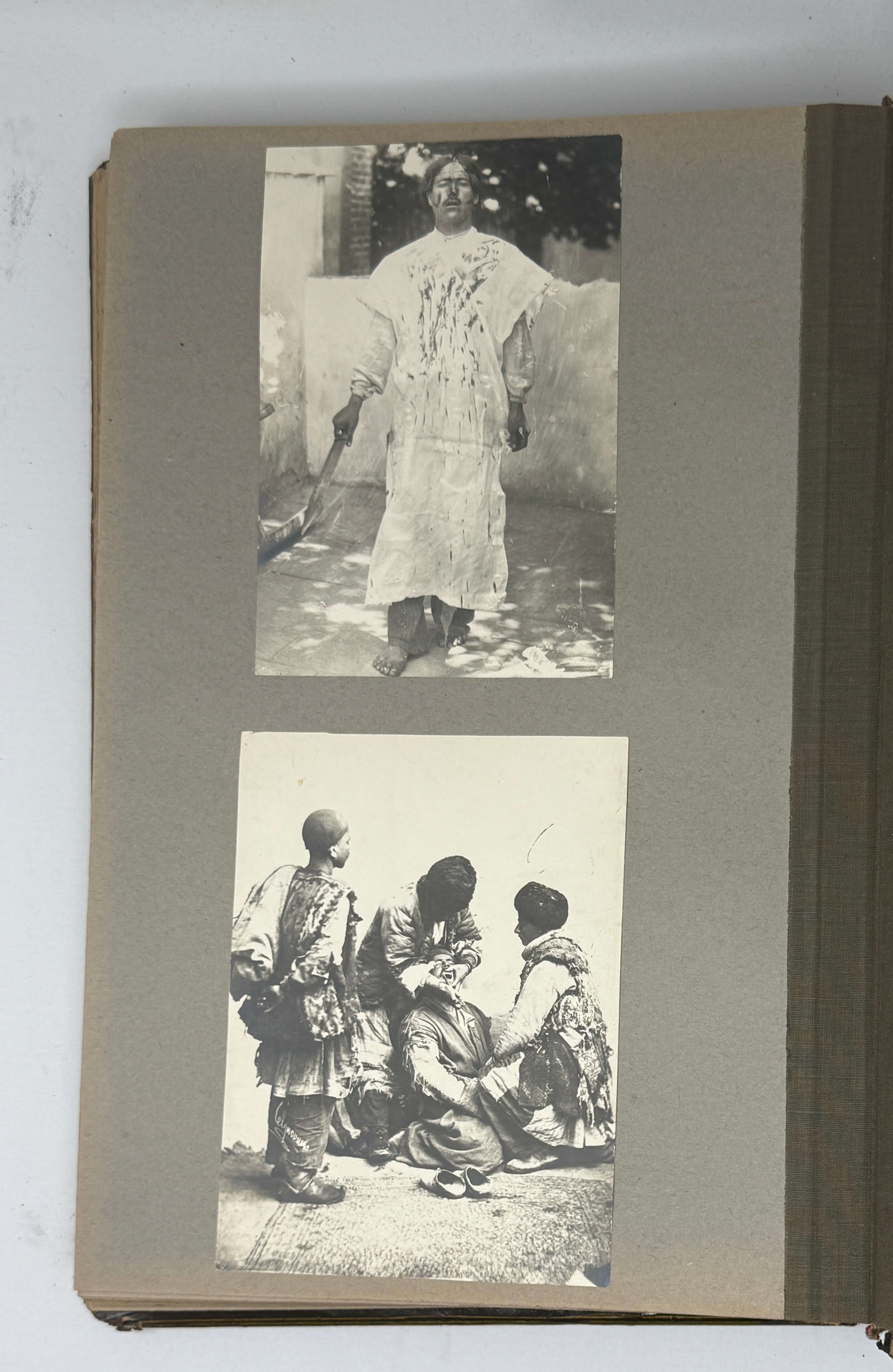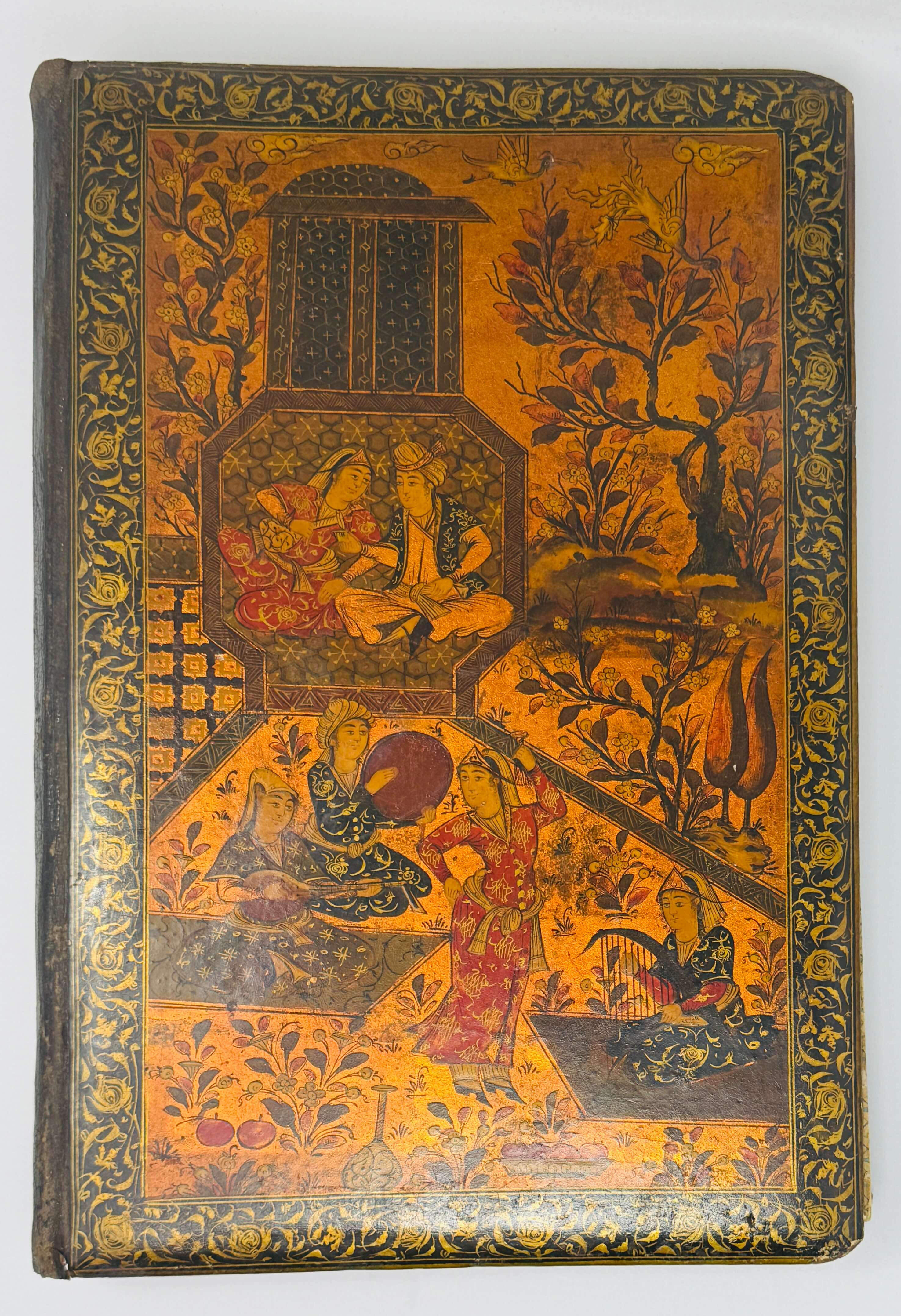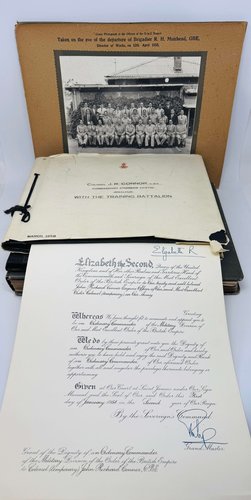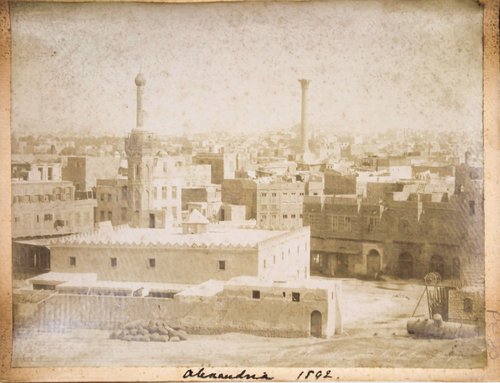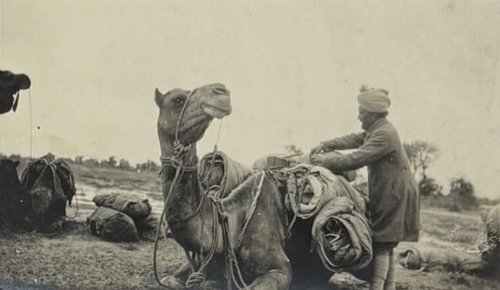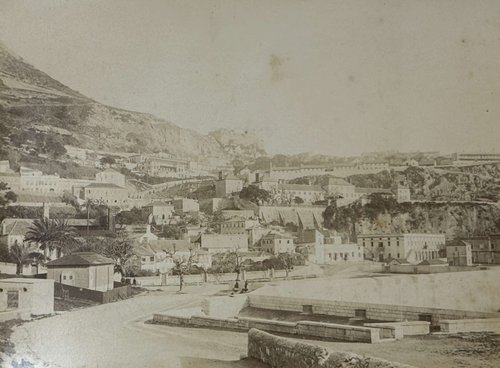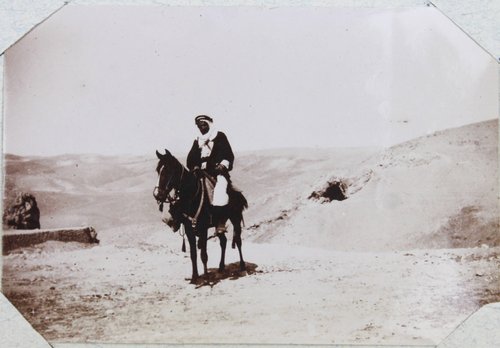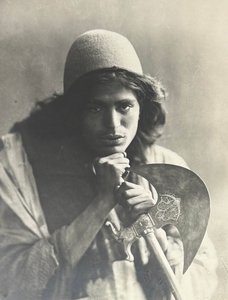
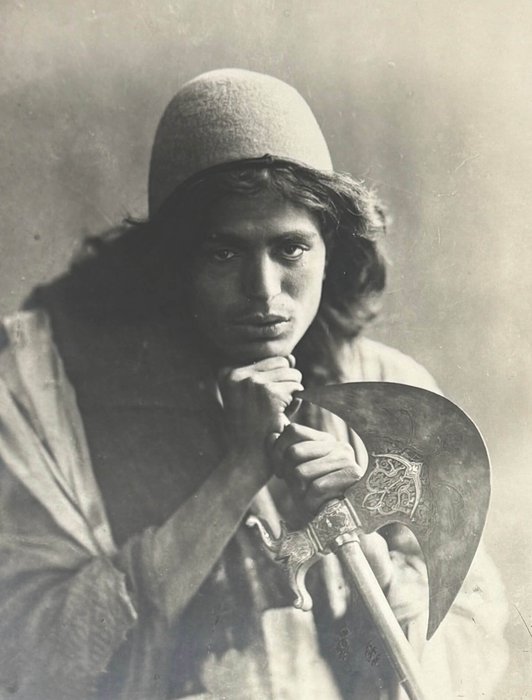
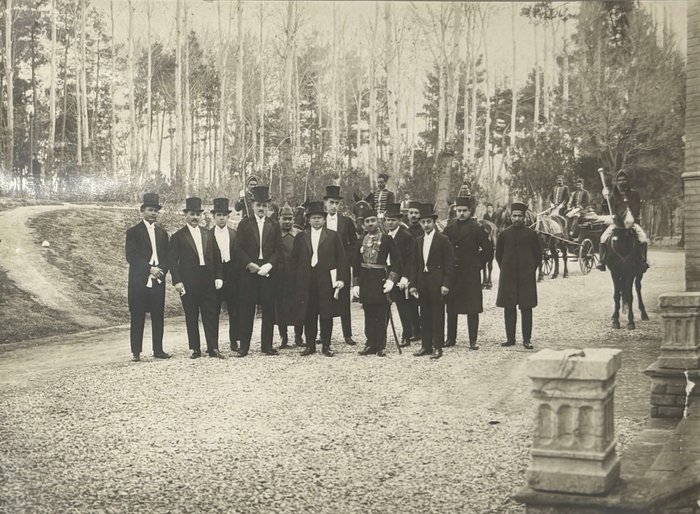
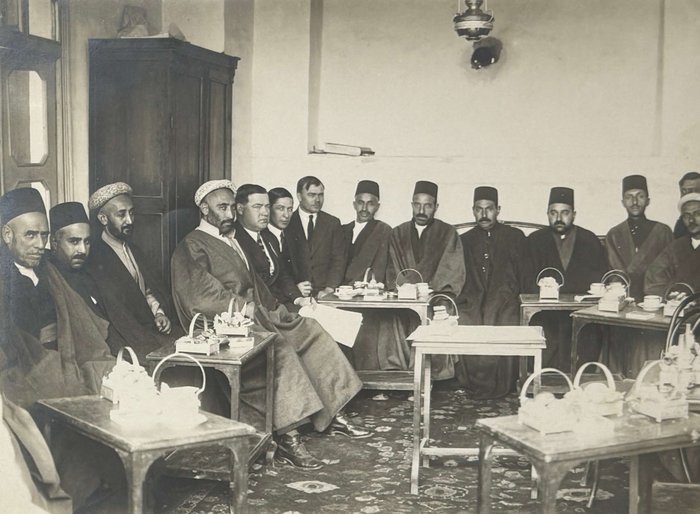
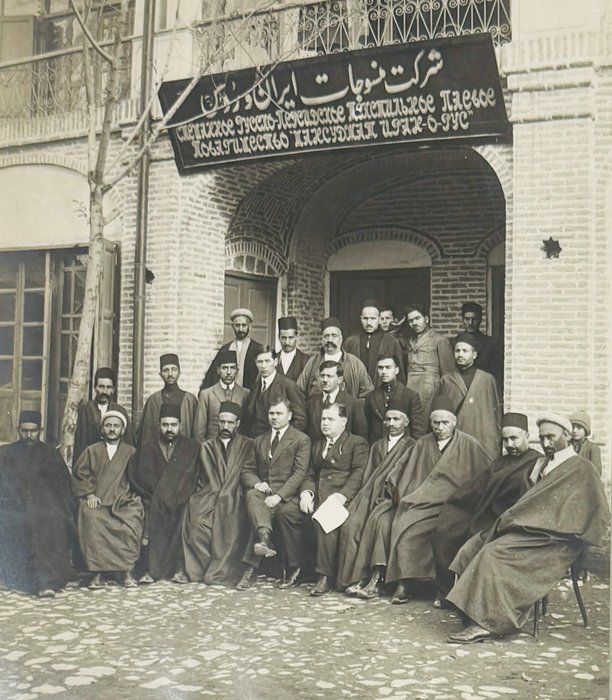
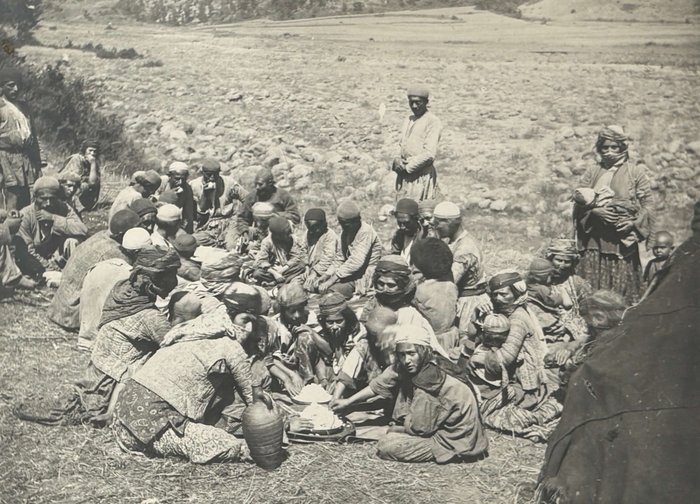
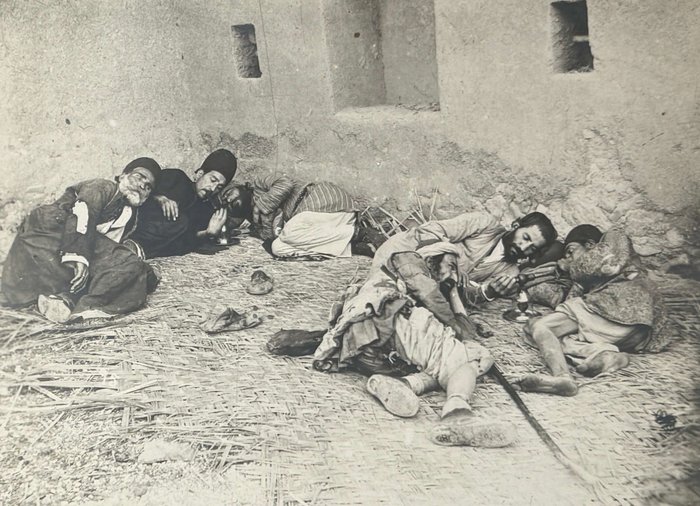
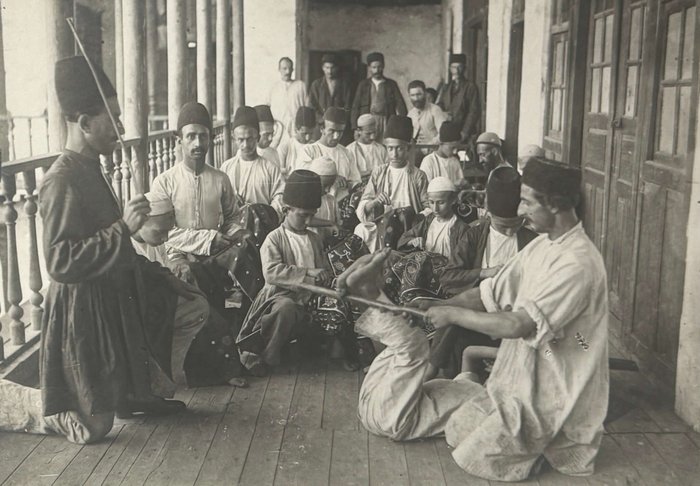
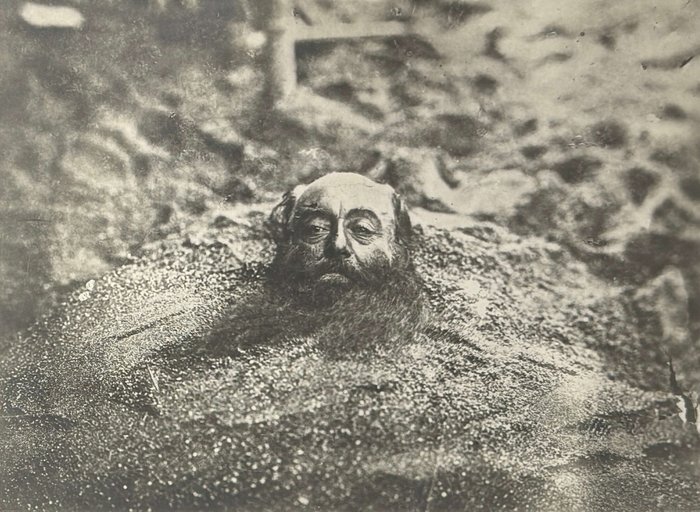
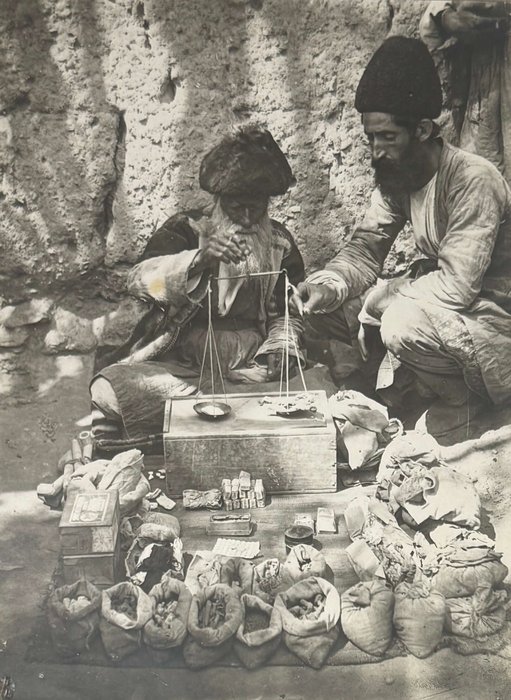
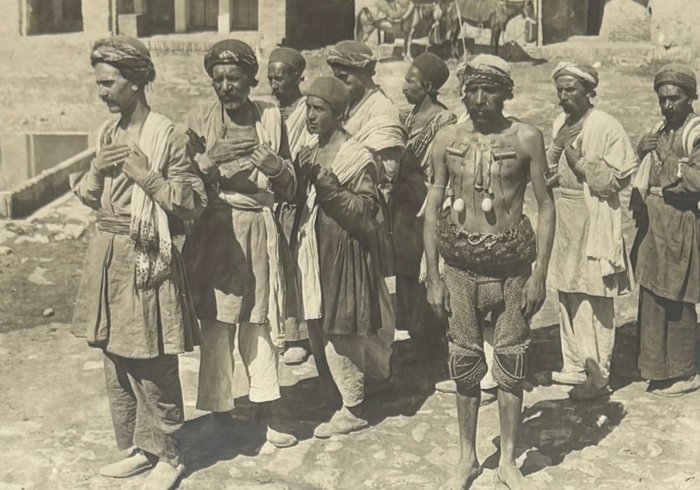
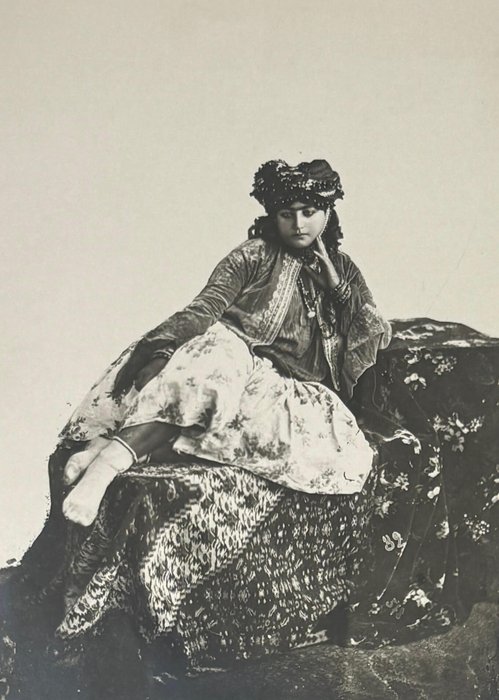
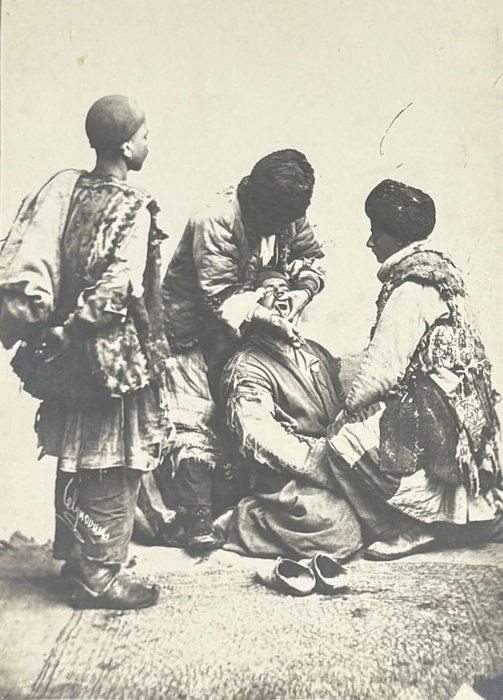
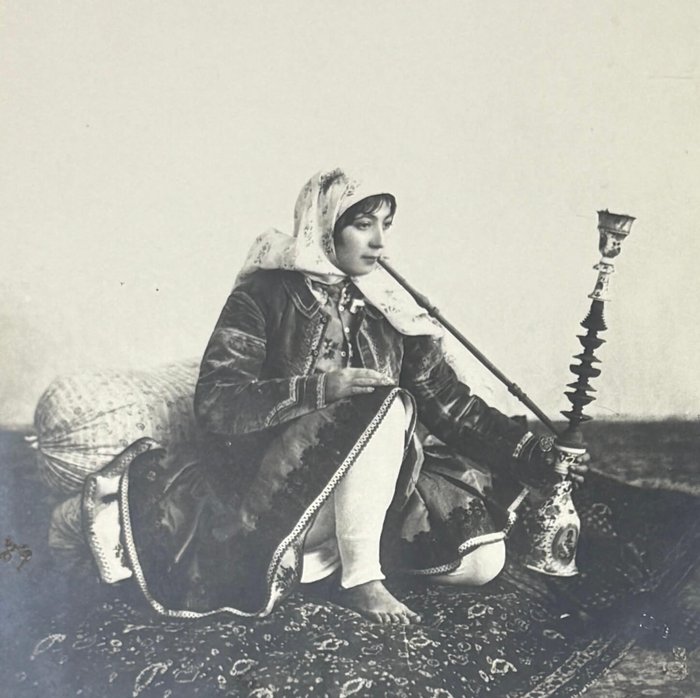
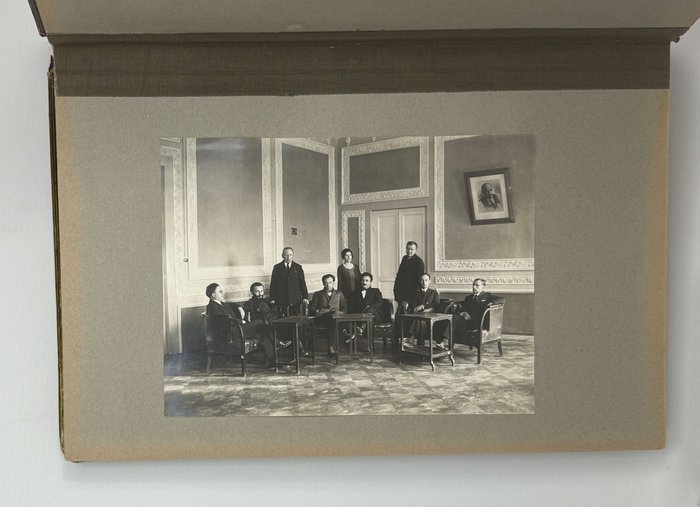
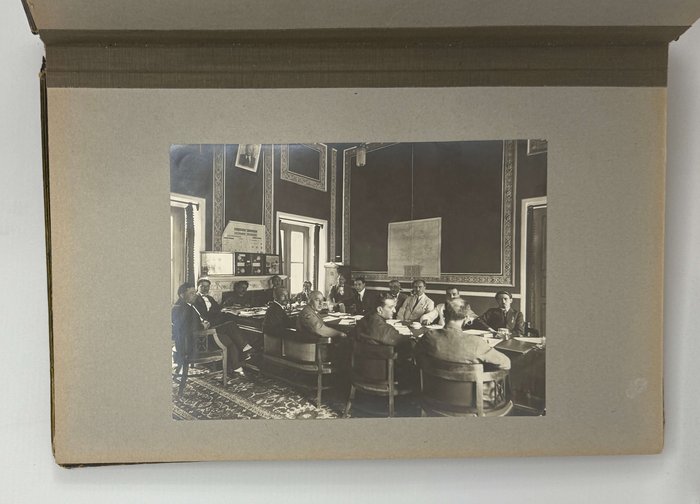
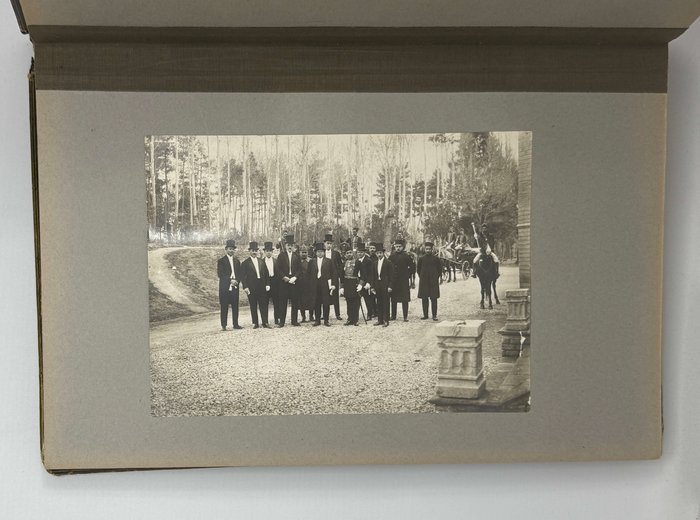
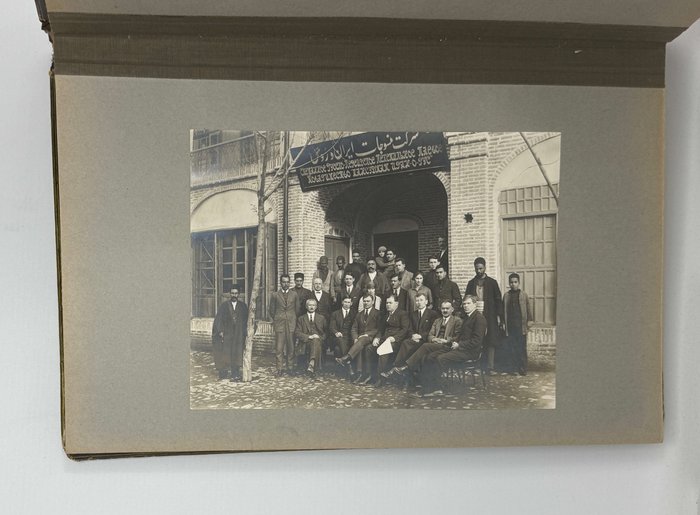
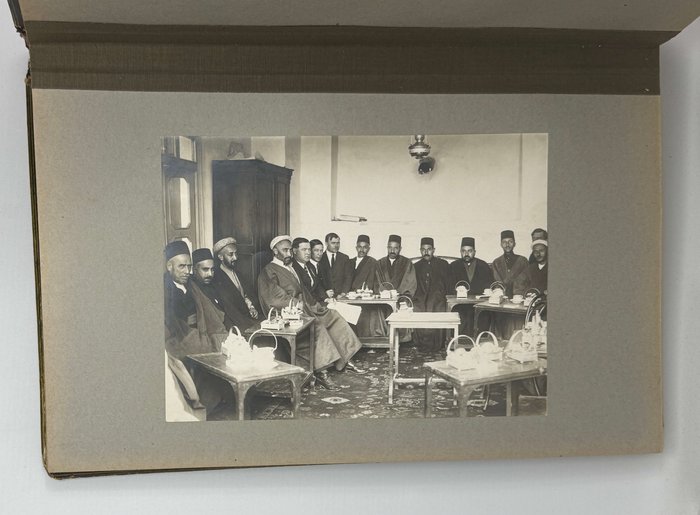
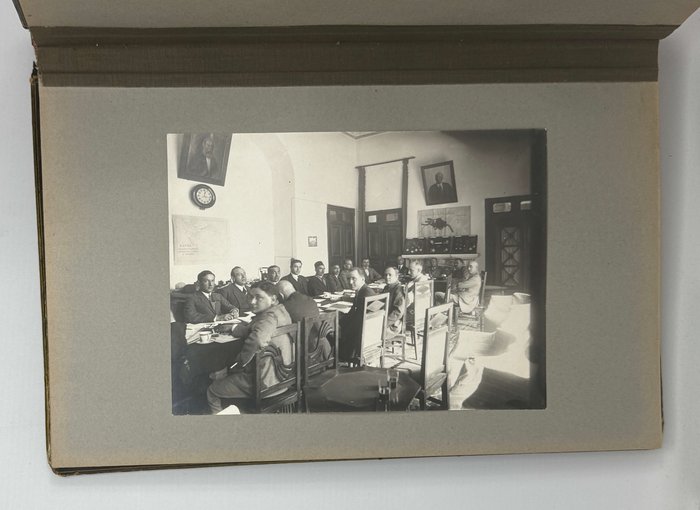
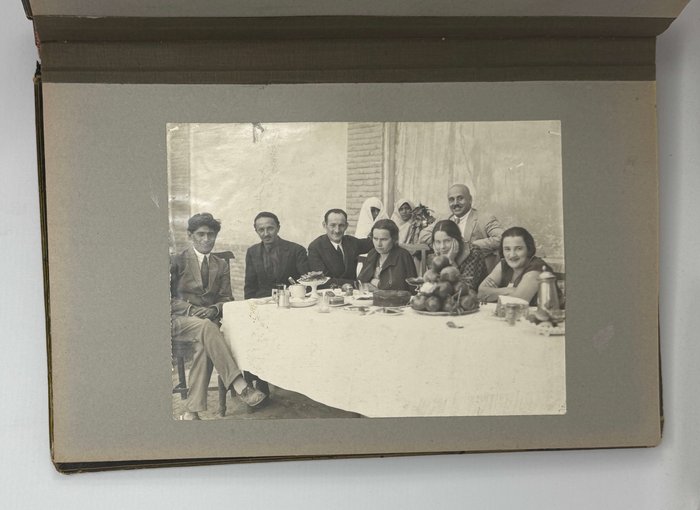
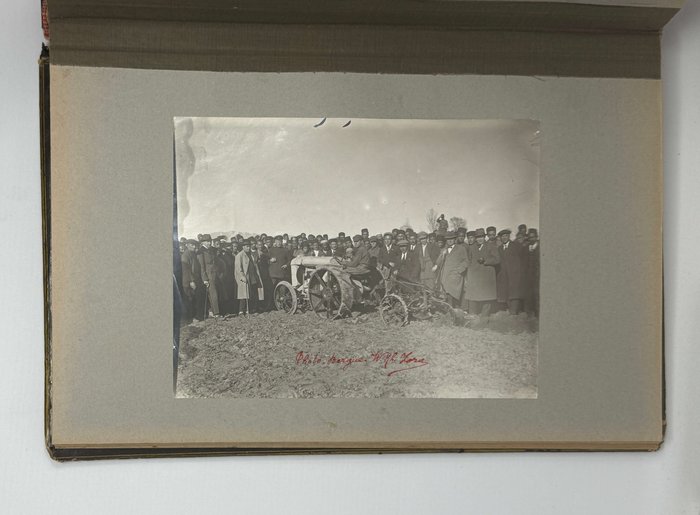
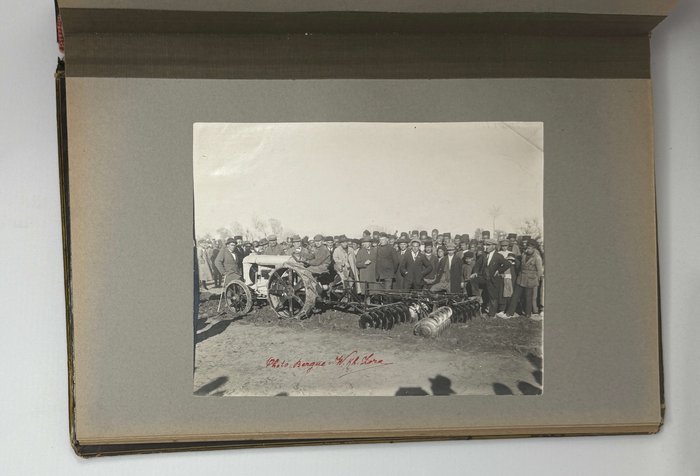
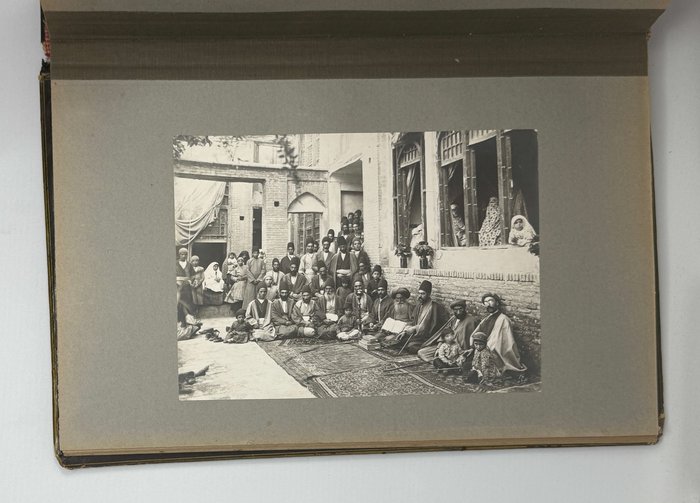
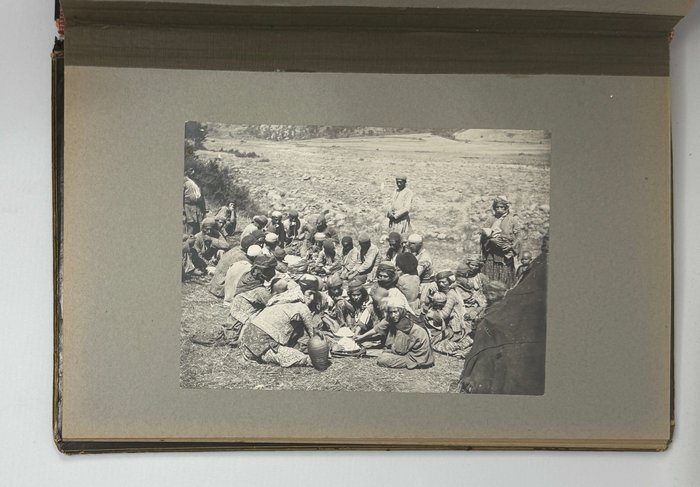
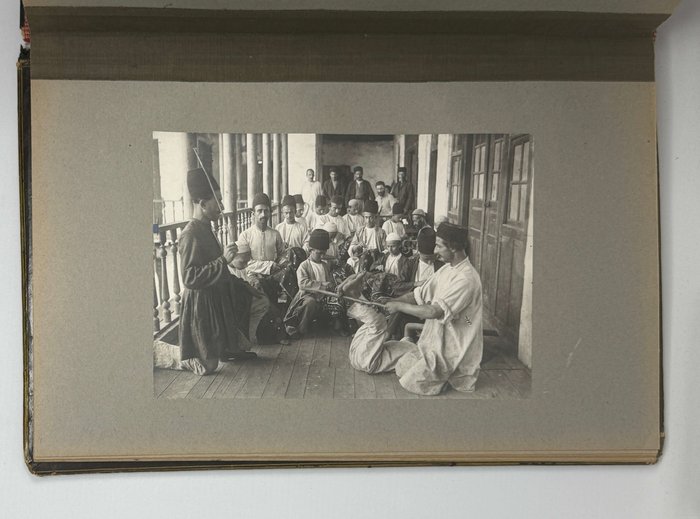
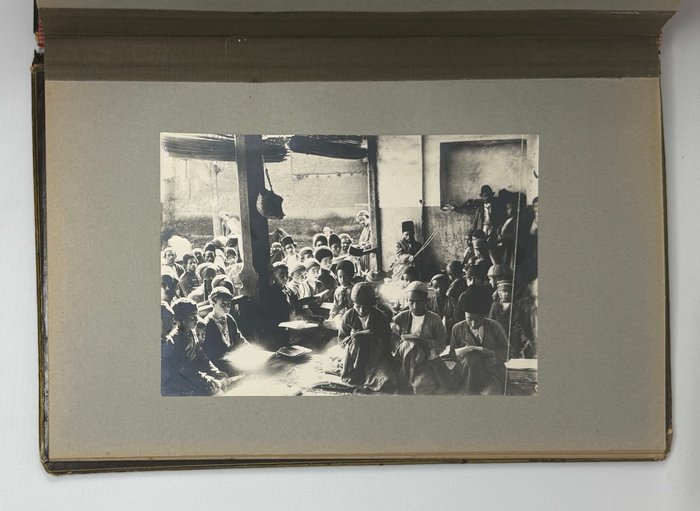
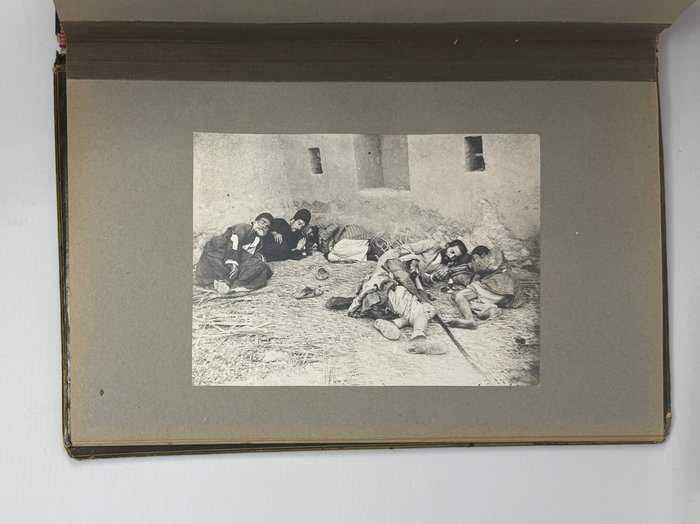
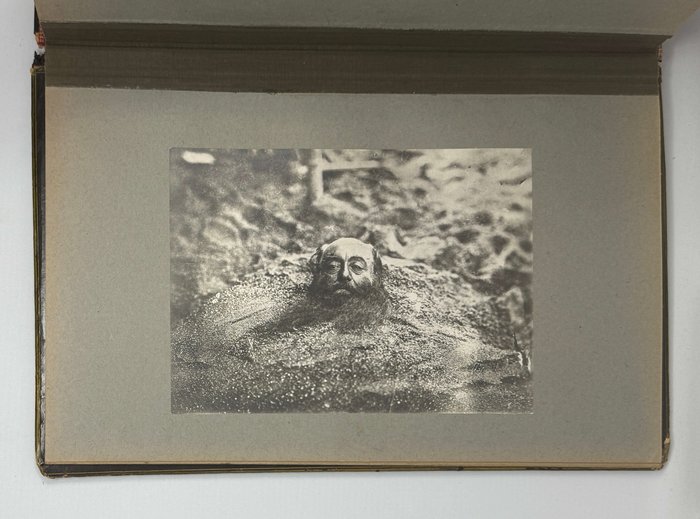
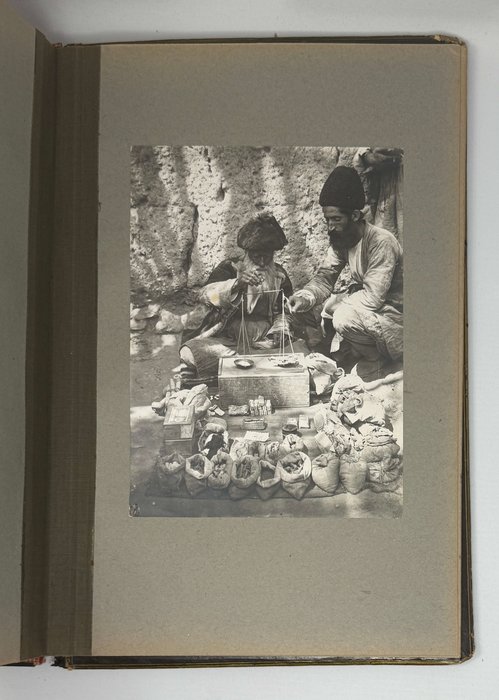
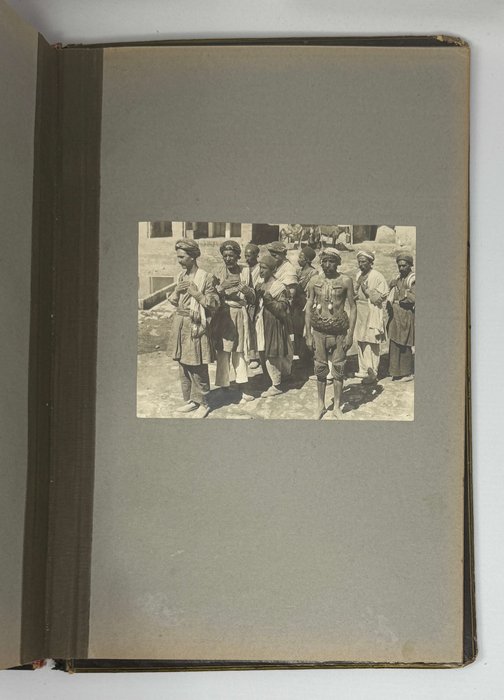
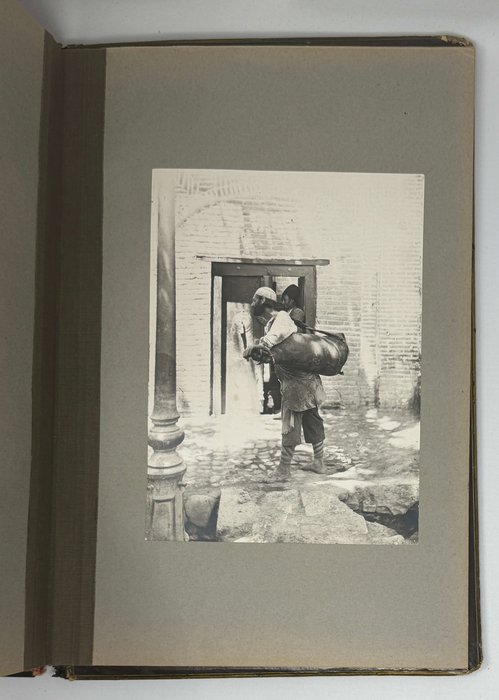
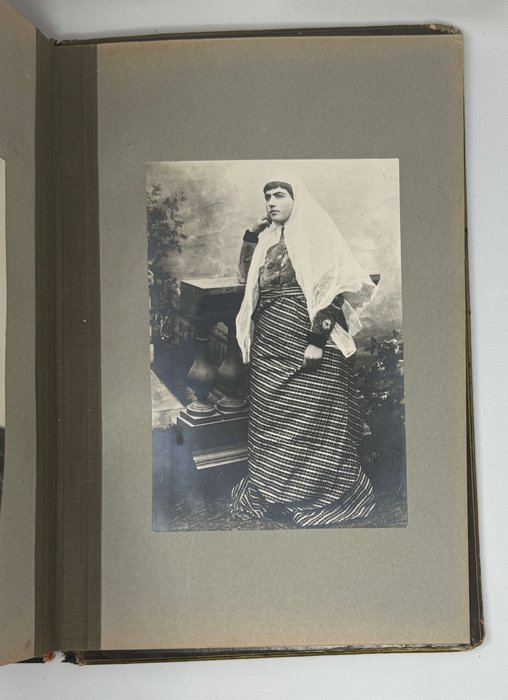
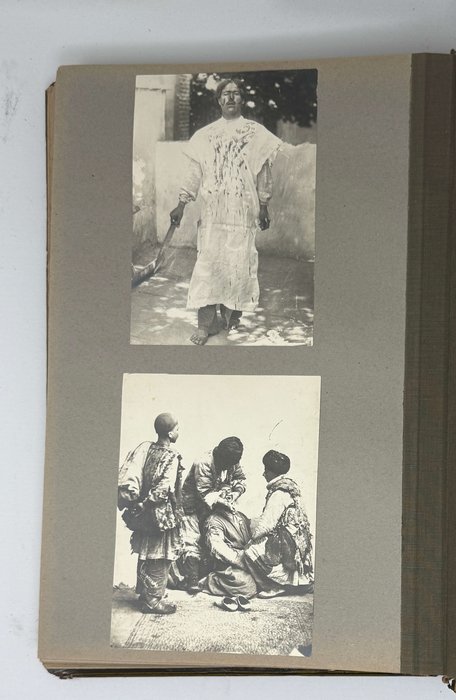
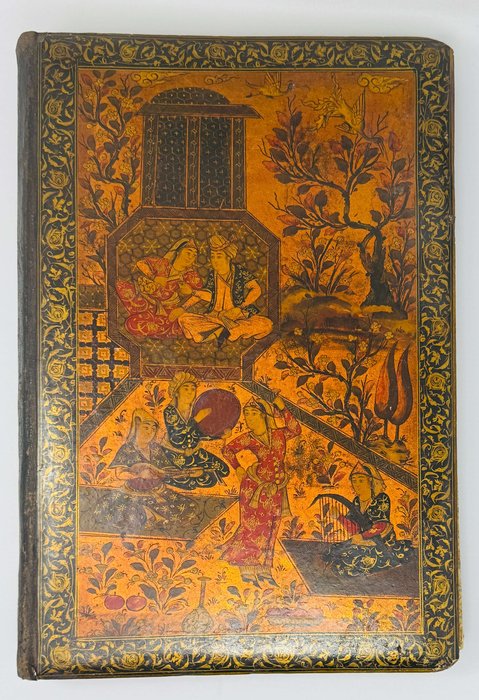
#PE19
Ca. 1920s
Folio album (ca. 38x25 cm or 15 x 9 ¾ in). 28 card stock leaves. With 33 original gelatin silver photos, mostly ca.18x24 cm (7 x 9 ½ in); three smaller photo are ca. 12x17 cm (4 ¾ x 6 ¾ in). No captions. Five images with the photographer’s red ink stamp on the lower margin. Period lacquered Iranian album with a brown sheep spine; decorative colour- and gilt-stamped scenes and floral ornaments in the style of classical Persian miniature on both boards. Decorative endpapers. Binding slightly rubbed on extremities, A few photos mildly faded, but overall a very good album of strong interesting photos.
Important collection of rare original gelatin silver photos, documenting work of Soviet Trade Mission in Persia (Iran) in the mid-1920s, during the first years of rule of Reza Shah Pahlavi (Prime Minister of Persia in 1923-25, the founder of the Pahlavi dynasty and Shah of Iran in 1925-41). The album belonged to Boris Goldberg, noted Soviet military commander and government official, who served as the USSR's official trade representative in Persia in 1925-1926.
Trade relations between the USSR and Persia started in 1923 after the reestablishment of diplomatic relations and the opening of the first Soviet Trade Mission (Commercial Representative Office) in Tehran the same year. In the 1920s, the prevailing form of trade cooperation between the two states was joint companies – Perskhlopok [“Persian Cotton”, est. 1923], Persshelk [“Persian Silk,” est. 1923], Rusperssakhar [“Russian-Persian Sugar”], “Perssovneft” [“Persian-Soviet Oil”], Mansudjat-e Persorus [import-export operations], Soviranryba [“Soviet-Iranian Fish”, est. 1927], and others. With the end of the New Economic Policy in the USSR in the 1930s, and the transformation of both countries into dictatorial regimes, most of the Soviet-Iranian joint companies ceased their activities by 1935 (see more: N. M. Mamedova, “RUSSIA ii. IRANIAN-SOVIET RELATIONS (1917-1991),” Encyclopædia Iranica, online edition, 2009; see more).
The album includes several group portraits of the members of the Soviet Trade Mission in Persia. Three scenes, taken inside the mission office (most likely, in Tehran), show Soviet officials during meetings or specially posing to the camera; walls are decorated with portraits of Vladimir Lenin, maps of Iran and dried plant specimens (likely, cotton or silk). One photo portrays Soviet administrators and staff in front of a decorated entrance, most likely to one of the mission offices. Three portraits depict Persian and Soviet officials during formal events, the former wearing full military uniform or traditional costumes, the latter - evening suits (tail coats, top hats and white or black tie). Two interesting photos show Soviet and Persian representatives posing in front of the building with a sign in Farsi and Russian: “Mixed Russo-Persian Textile Partnership ‘Mansudjat Iran-o-Rus’.” A lively, informal photo portrays Soviet male and female associates at a tea table, laden with sweets and pomegranates.
There are also five interesting photos documenting a Soviet-Iranian gathering on a field, likely at the beginning of the agricultural season, featuring officials from both countries, Iranians in military or police uniform, and spectators posing next to tractors and ploughs. Sixteen images at the rear are lively portraits of Iranian people: three scenes in a boys’school/madrasa (with two showing corporal punishment), photos of peasants in a field, opium smokers, an immured man (a form of execution), a street merchant with his good and scale, a group of dervishes (one with the piercing and several objects attached to his chest), a barber removing a man’s tooth, a water carrier, women in traditional costumes (laying on cushions, smoking hookah), &c.
Overall a important original visual source on the history of trade relations between Russia and Iran in the 1920s, during the early years of the Pahlavi dynasty rule.
Boris Goldberg was a member of the RSDLP since 1902, involved in revolutionary activities in Siberia (Chita, Krasnoyarsk, Ufa). After the February 1917 revolution, he served in commanding positions in the Red Army and later in Soviet civil institutions (Civil Air Fleet, People’s Commissariat of Foreign Trade, GUM/State Department Store, Kamchatka Joint-Stock Company, &c.).

